Do you wonder what lies beyond Paris? Industrial estates? High-rise blocks? Commercial zones? The least that I can say about the people of France is that they are quite lucky. The French countryside offers an amazing playground for holidaymakers and city dwellers in search of serenity. In this article, I invite you to an armchair discovery of the stunning countryside of France. Together, we’ll travel across the country, from the Paris region to Lorraine, the Dordogne, and Provence.
What does the French countryside look like?
As a French native who had lived in the French countryside, I have a clear understanding of what really is rural France.
This did not stop me from doing a bit of research on the topic.
And to be frank with you, I was quite bemused to read from a few bloggers (mostly American, no offence!) on the subject.
I did read some interesting posts… many mentioned Colmar, Annecy, and Chamonix as top French countryside destinations.
If Monsieur Tout-le-Monde (any ordinary Frenchman) was reading them, he would surely gasp a “HEIN?!” as his eyes would widen and eyebrows lift.
The fact is that they are middle-sized towns that are not associated with “la campagne“.
And cerise sur le gateau (icing on the cake!), some only depict the countryside of France through rose-coloured glasses… how many of us have seen these beautifully staged photos of girls in pretty dresses walking in a field of blooming lavender?
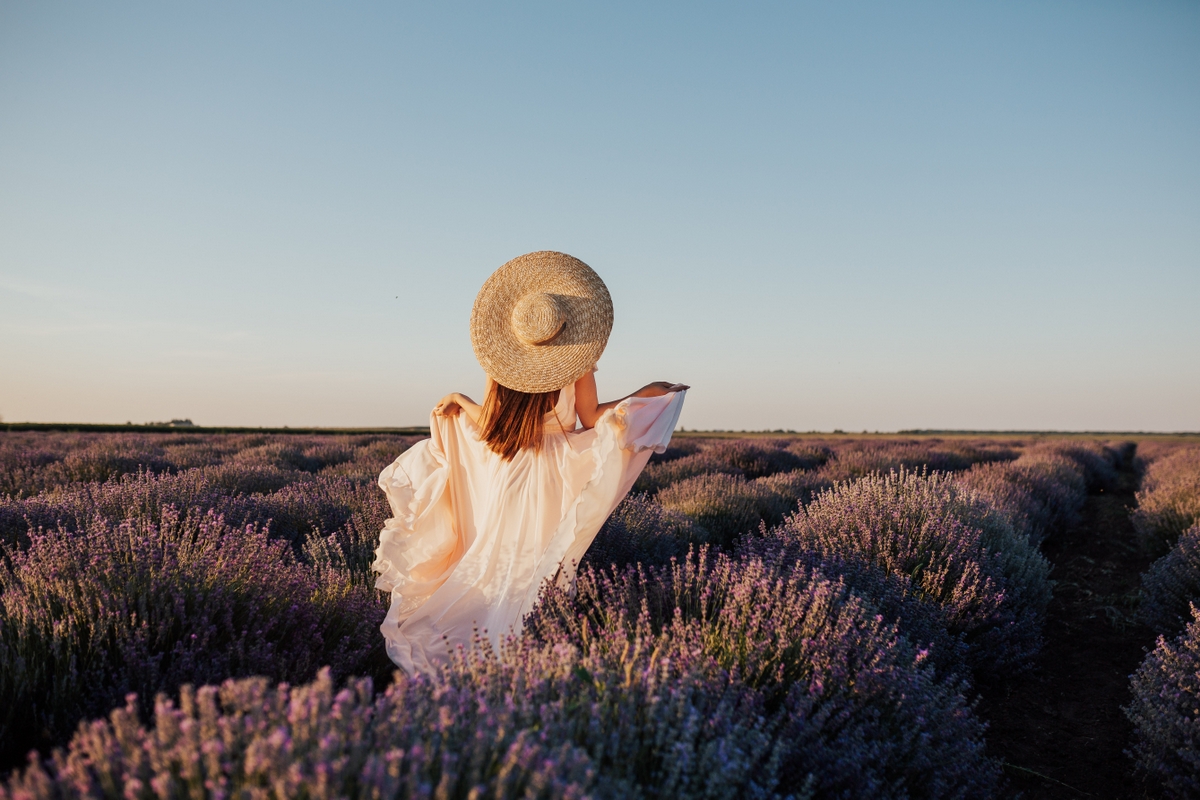
Although living in the French countryside can be a great experience, it can also come with challenges (think about Peter Mayle‘s funny Provençal stories!). It’s just about finding a balanced way to describe life in rural France.
And yes, we’re allowed to dream a little!
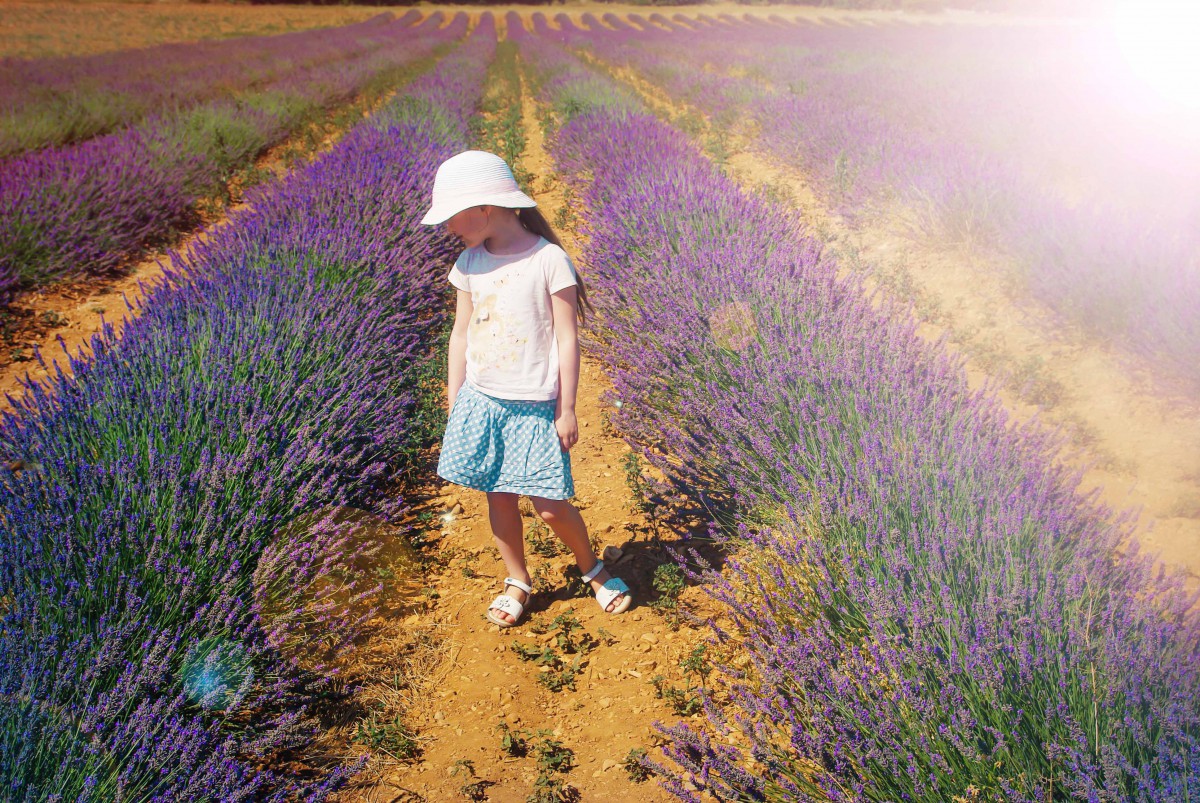
What is the French countryside?
In fact, it might well be that the perception of Anglo-Saxon bloggers on the French countryside is really different from that of the French.
It is quite possible that the root of the problem is semantic!
I’m pretty sure they wanted to talk about what is there beyond Paris. And so, how do we call it?
The countryside of France?
Well, not exactly.
For you’ll find some very large cities there: Lyon, Marseille, Lille, Bordeaux, Toulouse… and it might cause offence to their inhabitants if you come and say that they’re people living in rural France.
In fact, these bloggers couldn’t find the word they wanted to describe it.
We do have a special word in the French language:
La Province!
(not to be confused with Provence…)
La campagne française
In French, the countryside is la campagne. It is used in opposition to:
- la ville (the city or the town),
- la mer (the seaside),
- and la montagne (the mountain).
Therefore Chamonix in the Alps or the seaside villages of the French Riviera are not in the countryside as French people understand it.
Think more about rolling hills covered with fields, pastures or forests.
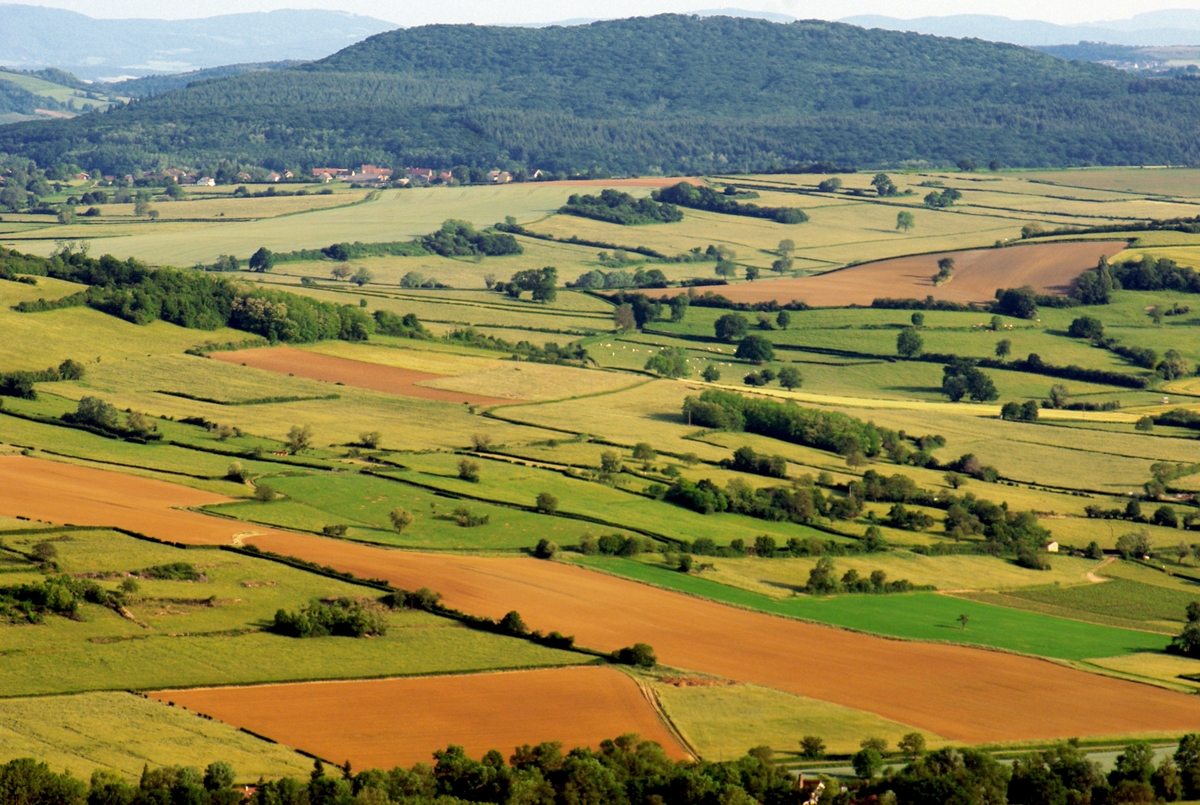
The bell tower of a church indicates the presence of a village half-hidden in the lush green backdrop.

The rural land is dotted with ponds, lakes, canals, and rivers.
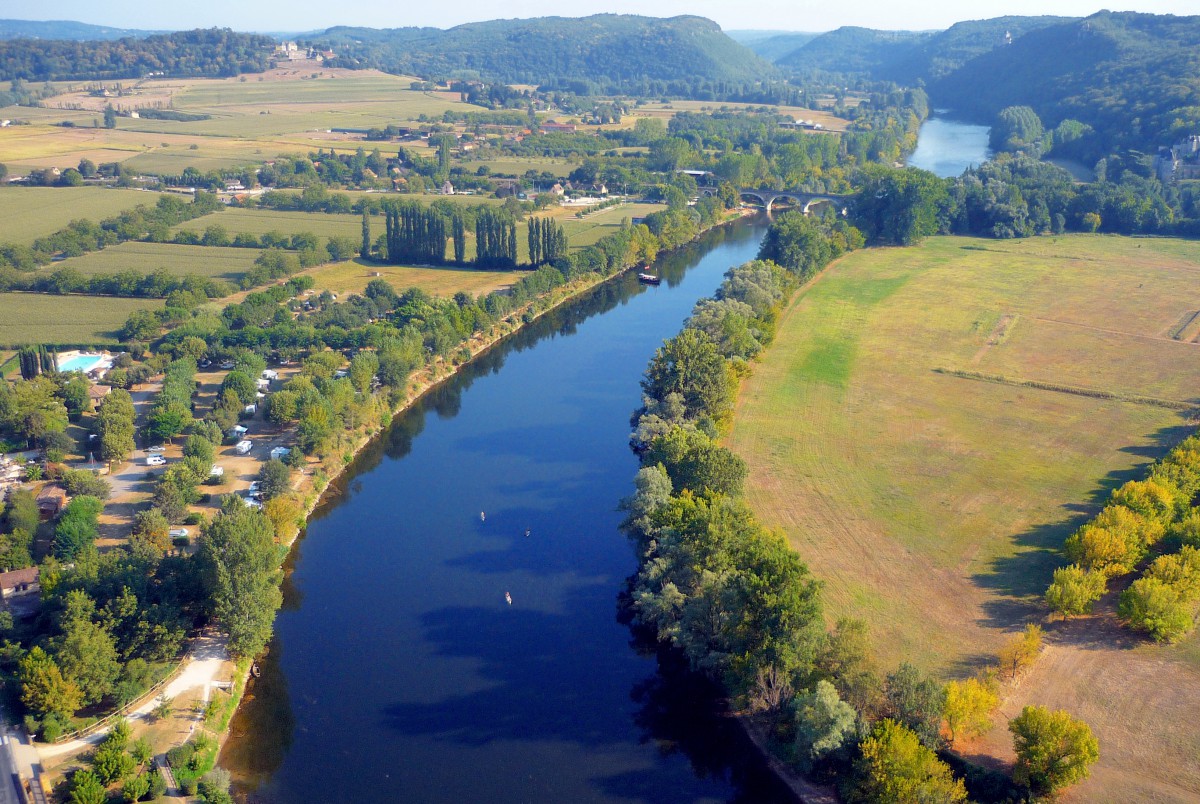
Lavender fields.
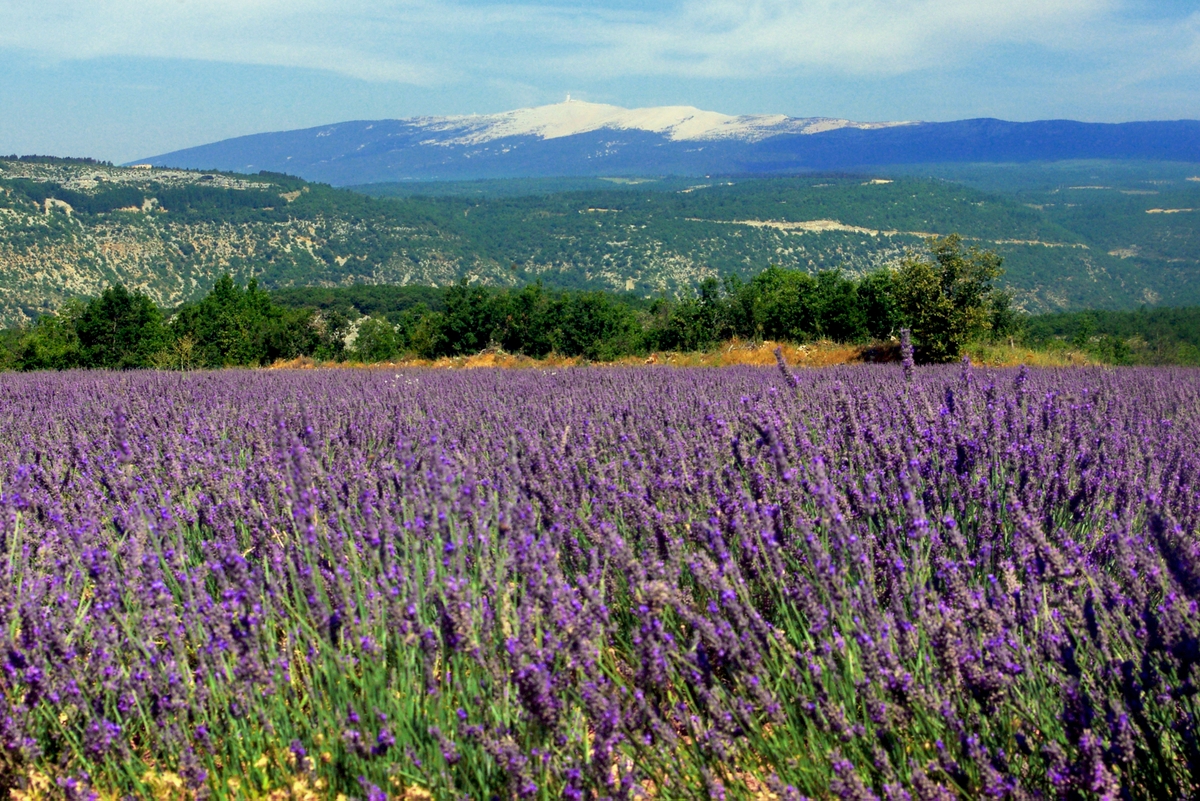
Sunflower fields.
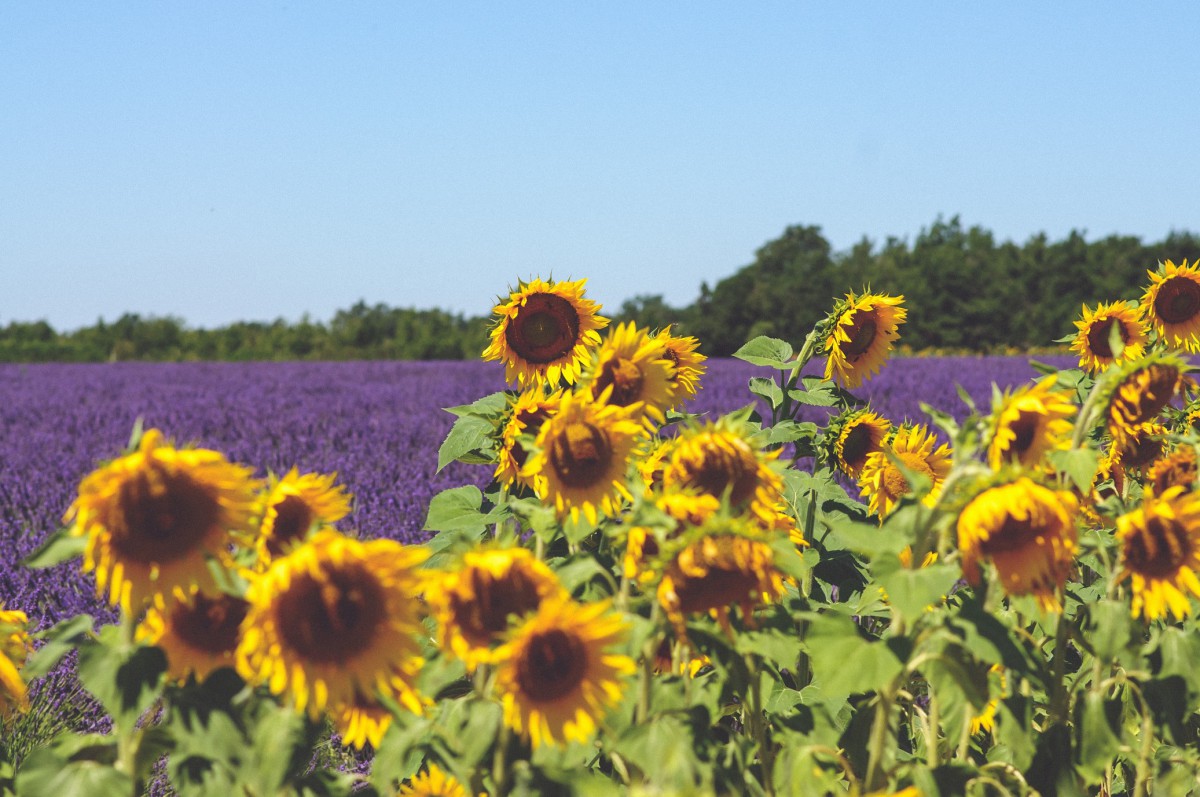
Poppy fields.
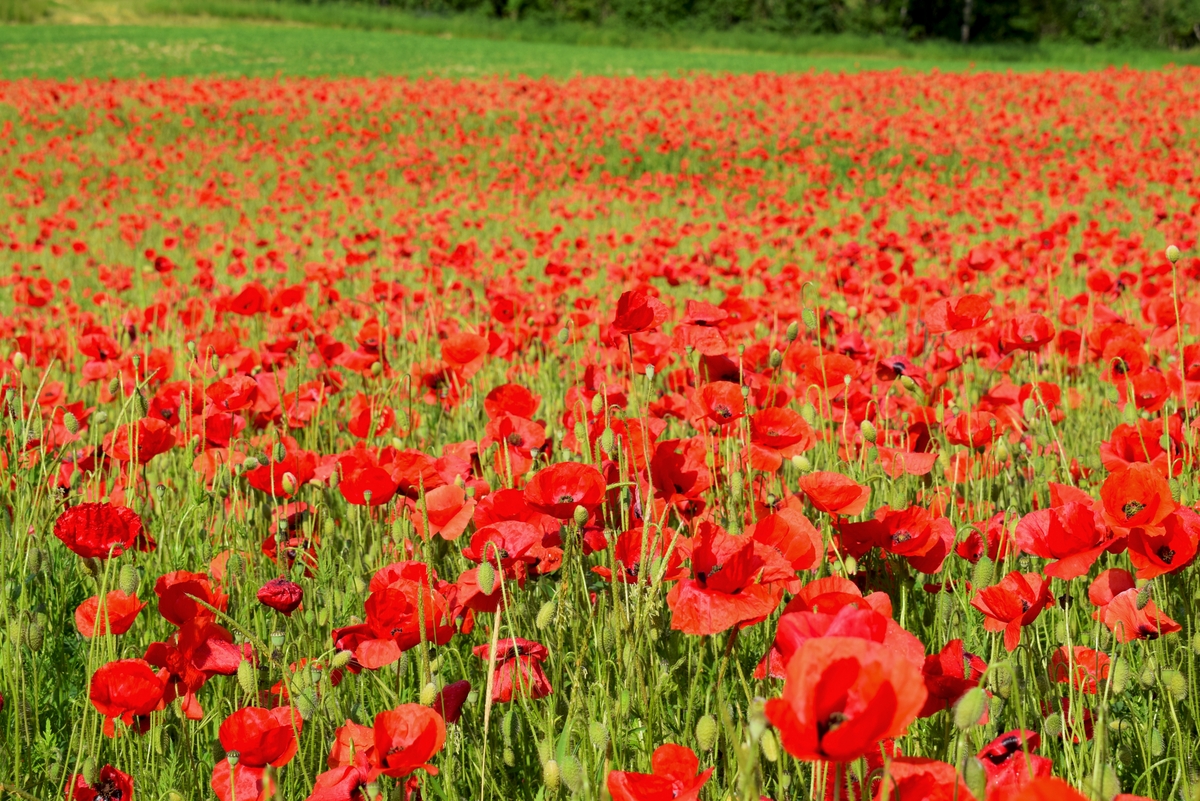
Tall trees line the country roads.

Now I’m sure I’ve made you dream! 🙂
No wonder that for decades holidaymakers have been irresistibly drawn to the peaceful atmosphere that reigns in the fields of France.
How to describe the French countryside?
You see, France has a thousand faces.
No other country of its size offers such a variety of landscapes as in France.
There is a multitude of diverse landscapes, which yet are “France”.
Here old customs and costumes linger to the delight of the curious explorer!

The plain of Beauce
South-west of Paris lies the great plain of Beauce. Parisians have given it the nickname of “Grenier de la France” (France’s granary). In summer a sea of golden wheat extends beyond the horizon, dominated by the towers of Chartres cathedral.
![Chartres cathedral from the Beauce © Pauden28 - licence [CC BY-SA 3.0] from Wikimedia Commons](https://frenchmoments.eu/wp-content/uploads/2020/09/Chartres-from-Beauce-©-Pauden28-licence-CC-BY-SA-3.0-from-Wikimedia-Commons.jpg)
The countryside of Western France
The bocage is a common landscape feature in the west of France. The French words refer to the chessboard pattern of little fields separated by thick hedgerows, as opposed to “champs ouverts” (literally open fields).

Cattle are reared in the lush meadows, corn is grown in the fields and fruits ripen in well-ordered orchards.
The countryside of Périgord
In south-west France, the historic province of Périgord includes four distinctive areas:
- Green Périgord (the colour of the lush pastures and woods)
- White Périgord (the colour of the limestone outcrops)
- Purple Périgord (the colour of the vine grapes that grow there)
- Black Périgord (the colour of the dense oak forests)
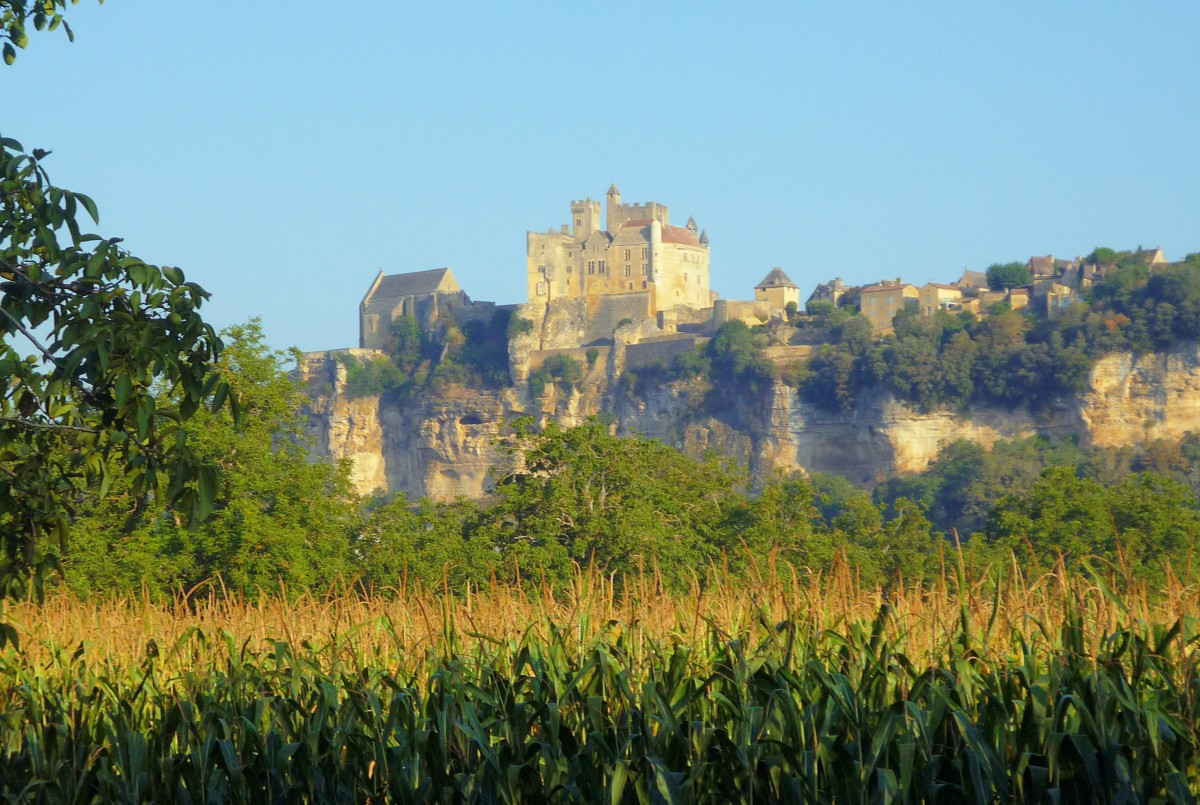
Known to the English as “the Dordogne“, this is the land where you can find the most medieval castles in France along with Alsace. You’ll see many fortresses still towering over the land it surveys for miles around, particularly in Black Périgord.
The Provençal countryside
Provence belongs to a completely different world. One of brilliant sunshine, of scrubland and bare rock patches.
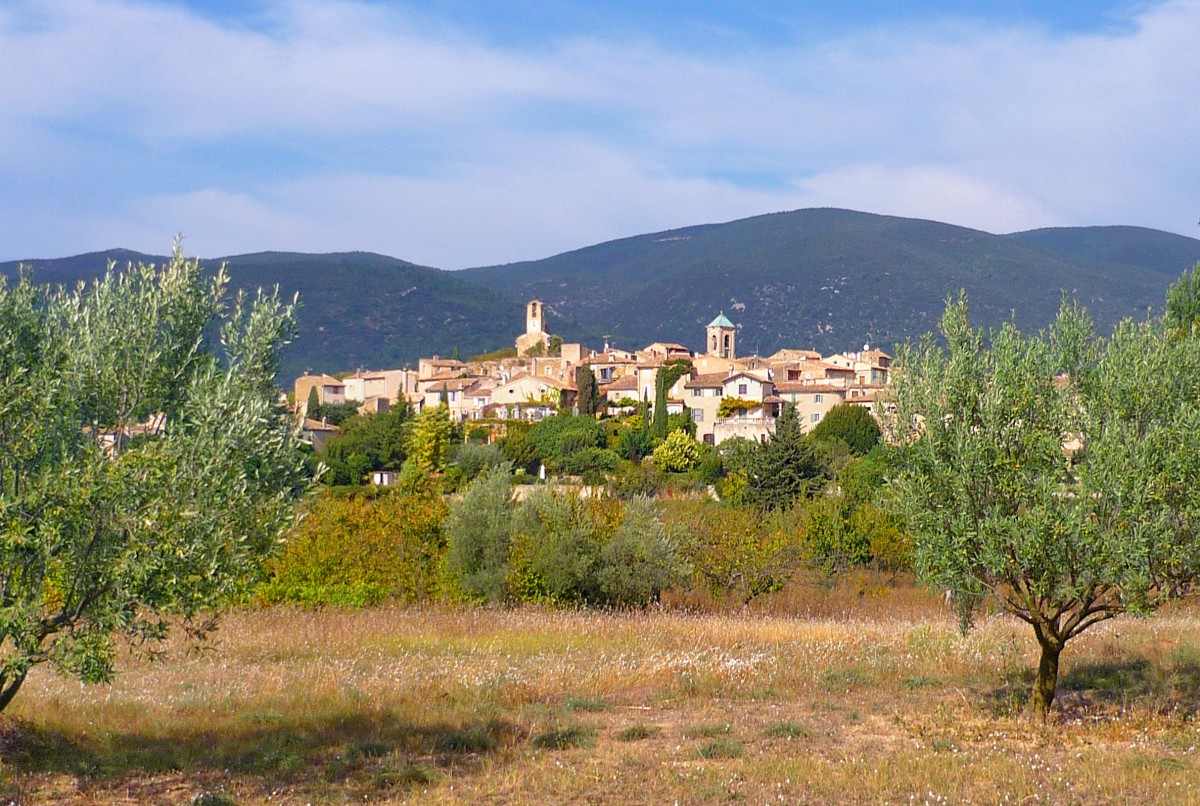
This is the land of corn and of wine, of fruit and olive trees… and of course, of lavender fields!
Our favourite thing in Provence is a sunset in the Luberon region. The Provençal countryside seems peaceful and serene, inspiring a feeling of awe.

The Burgundian countryside
Burgundy offers an infinite variety of landscapes: vineyard-covered hillsides, charming valleys, green pastures, and dense forests.
The countryside of Burgundy is crisscrossed by numerous waterways by the sides of which cycle paths have been created to enable cyclists to enjoy the beautiful scenery.

The countryside of Lorraine
Lorraine is a land of “côtes“. Deep forests cover the sharp limestone ridges. The clay vales are used both for cultivation and for pasture.
Our favourite countryside drives in Lorraine are in the Toulois (region of Toul), the Saintois (Hill of Sion) and the eastern part of the Lorraine Natural Park.

The Plain of Alsace
The plain of Alsace is like one great meadow. Along the Rhine stretches the Grand Ried (forest and even marshland on the river’s gravel beds).
However, the plain is a very rich farming area. Cereals and hops alternate with orchards. At the foot of the Vosges are great vine-growing lands, characterised by charming flower-filled villages: Eguisheim, Kaysersberg, Riquewihr, Mittelbergheim…
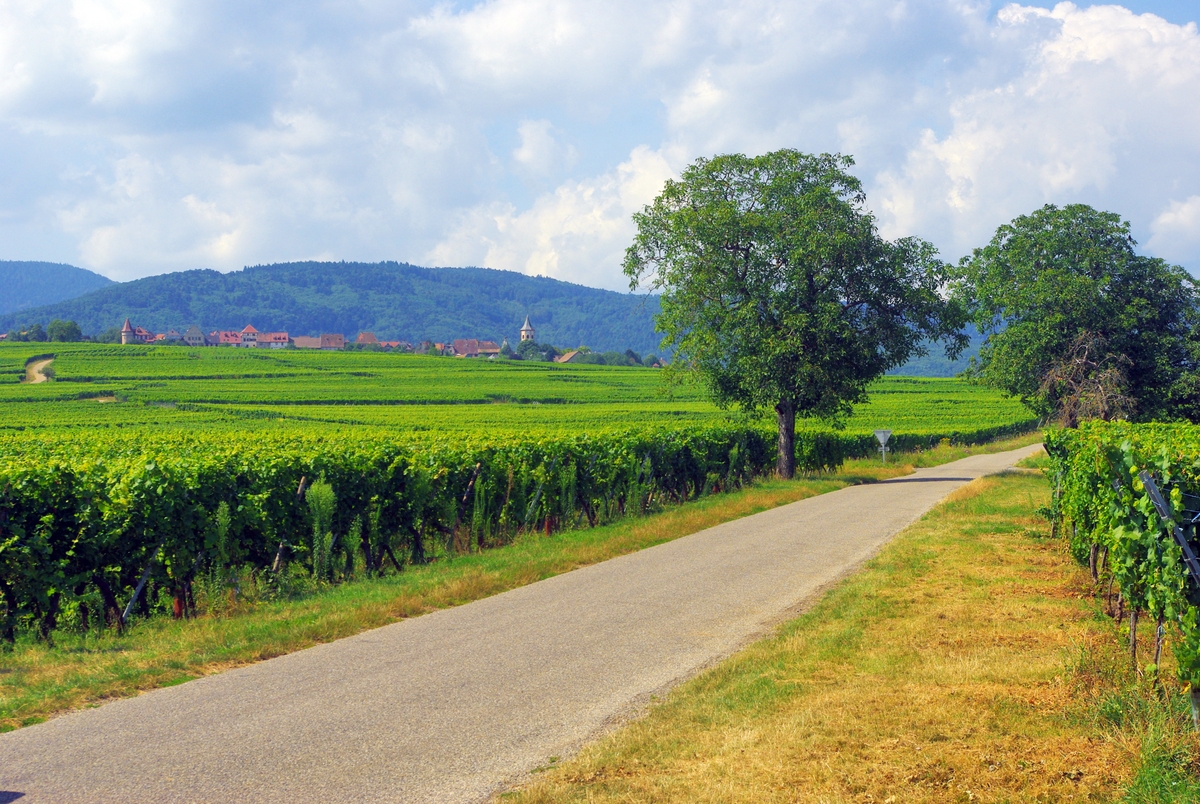
A song evoking the countryside of France
You’ve probably heard the song before.
Its title is “I Wish You Love“.
It was sung by famous singers such as Chet Baker, Shirley Bassey, Bing Crosby, Nat King Cole, Michael Bublé and many more.
Did you know that French artists Léo Chauliac and Charles Trenet composed the song in French in 1942 under the name: Que reste-t-il de nos amours?
The original version of the song describes a nostalgic image of the French countryside (a local feature that American translators deliberately omitted!).
Que reste-t-il de nos amours
Que reste-t-il de ces beaux jours
Une photo, vieille photo
De ma jeunesse
[…]
Un petit village, un vieux clocher
Un paysage si bien caché
Et dans un nuage le cher visage
De mon passé
The literal translation of the song
What is left of our love?
What is left of these beautiful days?
A photo, an old photo
Of my youth
[…]
A small village, an old bell tower
A countryside so well hidden
And in a cloud the dear face
Of my past
Other examples of French songs celebrating the countryside are:
- Douce France by Charles Trenet (1943),
- Le Loir-et-Cher by Michel Delpech,
- and more recently A Nos Souvenirs by Corrèze-based Trois Cafés Gourmands.
These songs – among others – often depict an idyllic vision of living in the French countryside.
The sensory heritage of the French countryside
Have you heard of Maurice?
If you’ve been following me for a little while, you will remember this email I sent you about this crazy fait divers (miscellaneous news item).
Maurice had made the headlines not only in France but all over the world.
It’s about an ordinary rooster in the French countryside who was bothering a retired couple who had bought a holiday home nearby.
They couldn’t bear to be woken in the morning by Maurice’s ‘gracious song’.
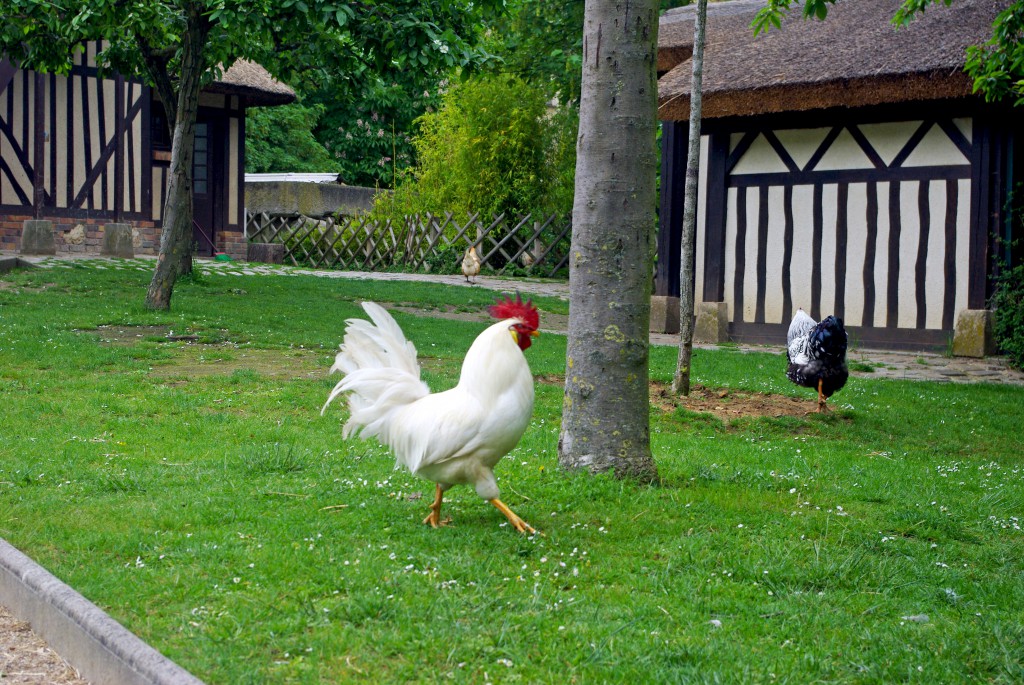
Maurice’s owner received a legal notice from the couple claiming the noise was a health risk.
The case was brought to Court.
Maurice won the battle and was free to continue his noisy crowing!
But the story doesn’t stop there.
In fact, the case set a precedent in France.
The protected national heritage of France’s countryside
In January 2021, France passed a law protecting the “sensory heritage” of its rural areas, in the face of complaints about the noises and smells typical of the countryside.
The law protecting the sounds and smells of the French countryside is aimed at defending aspects of rural life against the complaints made by visitors (or new arrivals), dubbed ‘neo-rural’.
In fact, the countryside of France has seen an increasing number of social conflicts between the rural and the neo-rural. The latter have been complaining about all sorts of issues:
Loud roosters, croaking frogs, cowbells, grasshoppers, pungent horse manure, tractors…
The new legislation aims to better understand the typical “sounds and smells” of the French countryside and prevent “disagreements between neighbours.”
Maurice is now deceased (he died of a respiratory infection in the summer of 2020), but Joël Giraud, the French Minister for Rural Affairs, mentioned the rooster in a tweet celebrating the new law, writing:
“A posthumous victory for Maurice the rooster, a symbol of rural life!”
The owner replaced the famous rooster with Maurice II who will be able to carry out his morning crow with the law behind him! 🐓
The French countryside near Paris
The urban area of Paris covers 23.7% of the Ile de France and is home to 88.6% of the region’s population.
This means that the countryside covers three-quarters of the Ile de France.
In fact, you don’t have to drive far into la France profonde (deep France) to find some greenery. It’s surprising to see how the Paris region is rural despite the 10 million people living in the area.
Here are fields and green pastures, including some of France’s most beautiful forests:
- Fontainebleau
- Rambouillet
- Saint-Germain-en-Laye
- Rambouillet, and
- Sénart
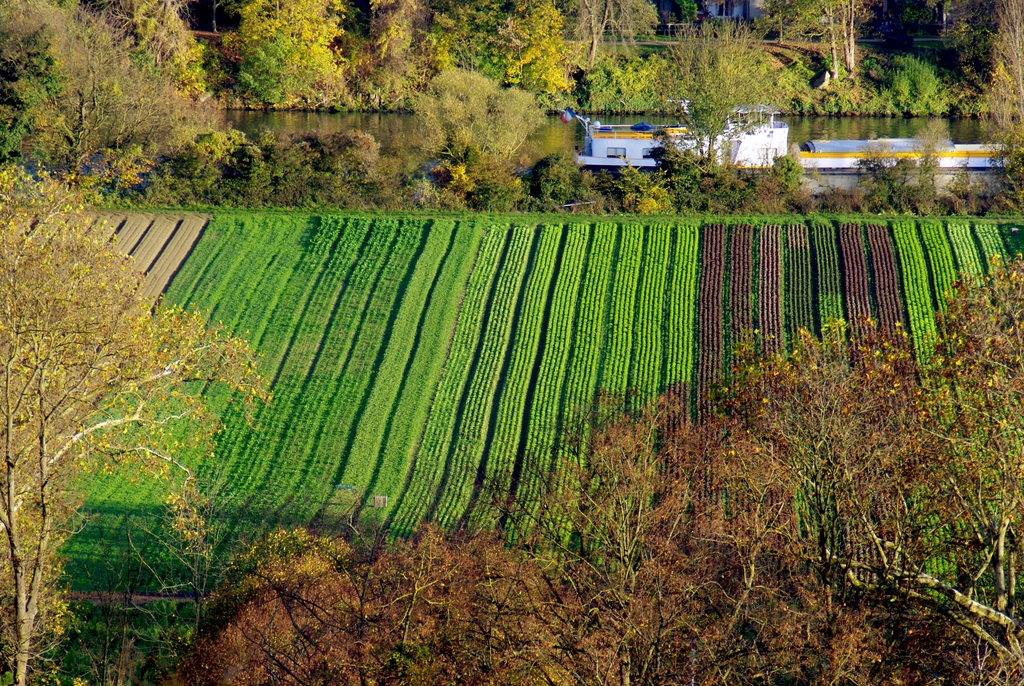
Actually, you don’t even have to leave Paris to experience the village atmosphere of the French countryside… There are a number of spots that massive urbanisation hasn’t (yet) touched. Look for:

Beautiful French countryside towns
Across France, you’ll find a series of exquisitely preserved countryside towns. Most of them are market towns, with shops supplying the bare necessities of French life:
- la boulangerie-pâtisserie (bakery),
- la boucherie-charcuterie (butcher),
- le salon de coiffure (hairdresser)…
- la pharmacie (chemist),
- and often a small supermarket that replaces the traditional épicerie.
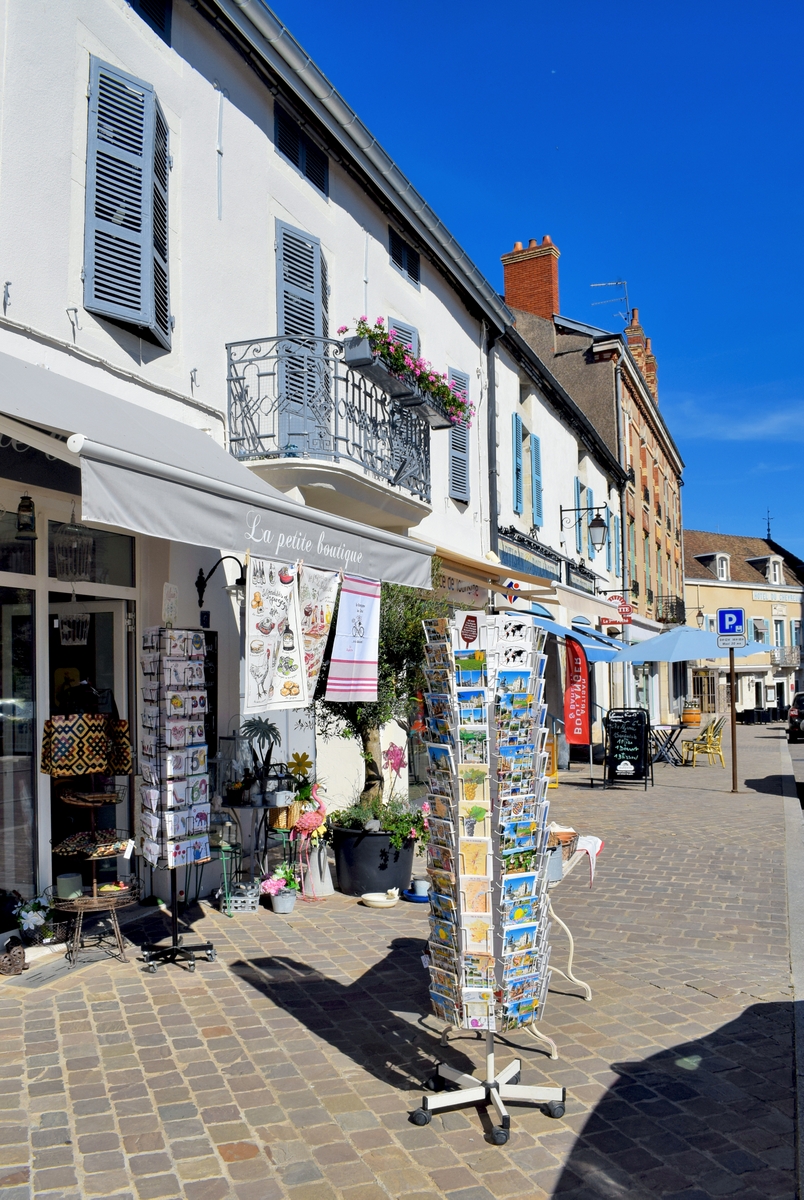
Narrow streets are an invitation to lose oneself exploring the old town.
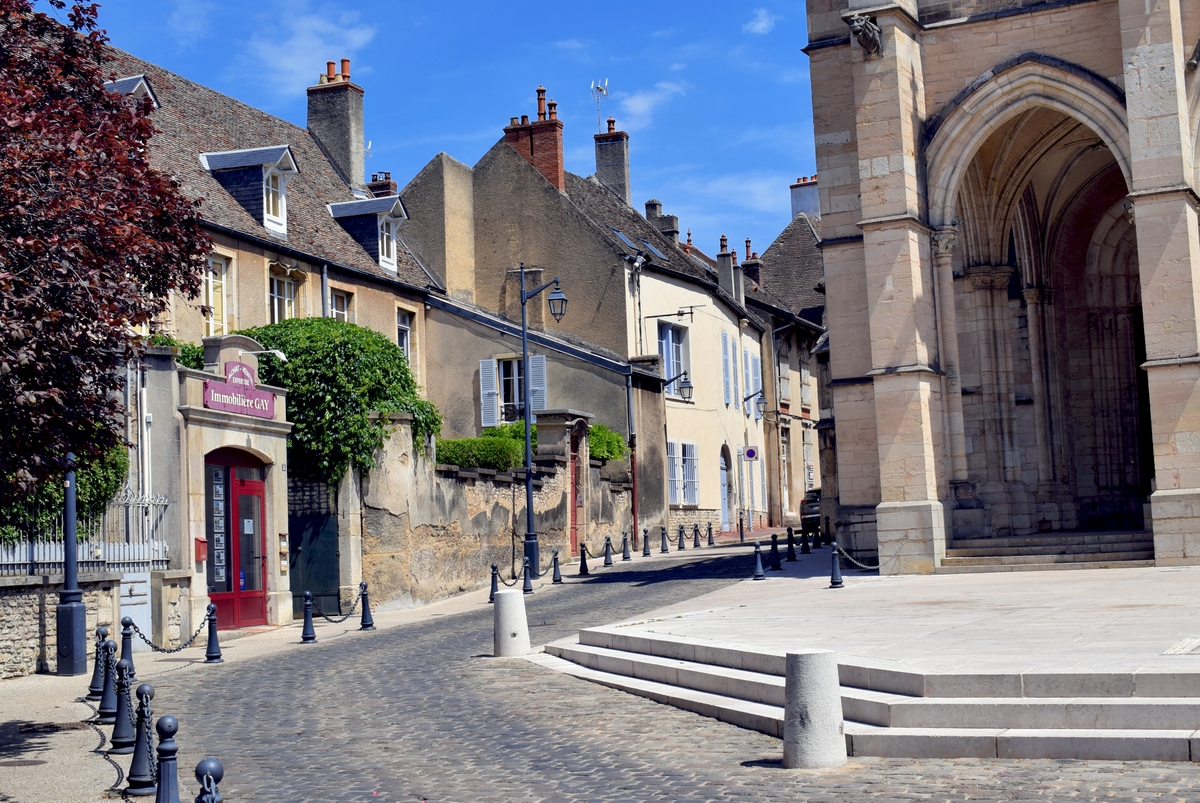
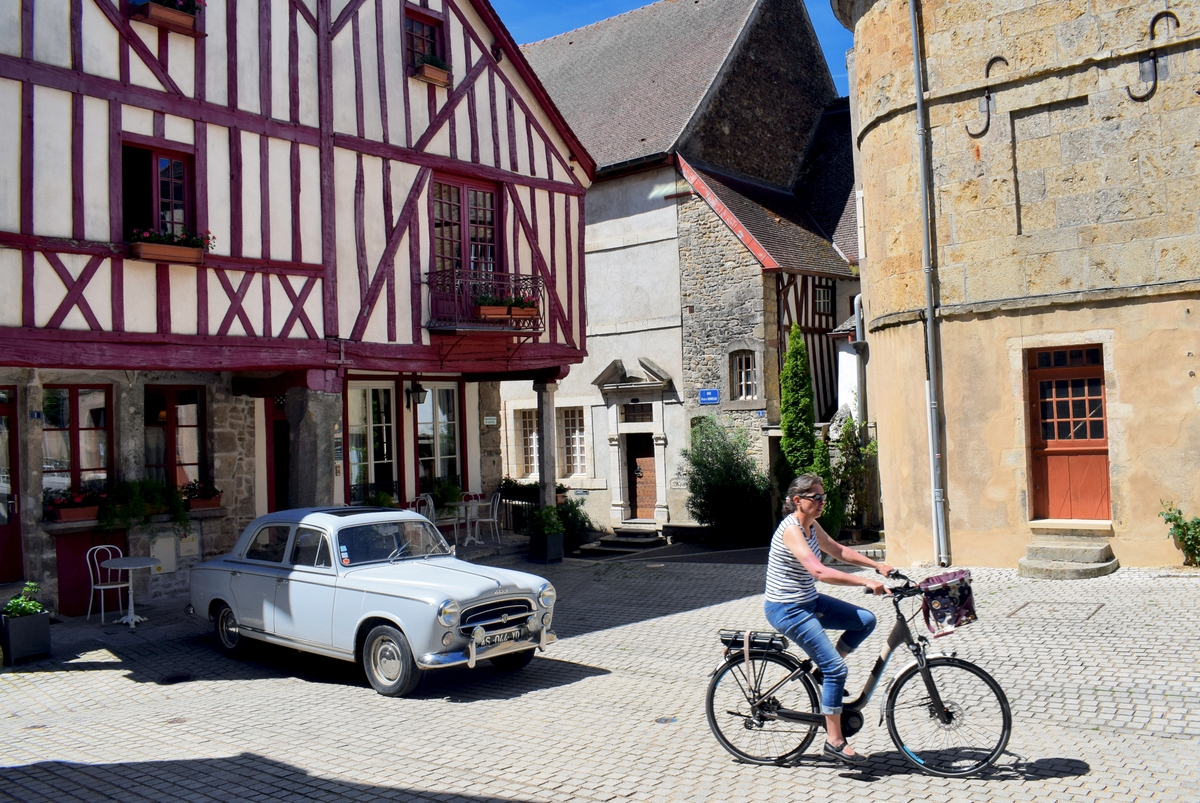
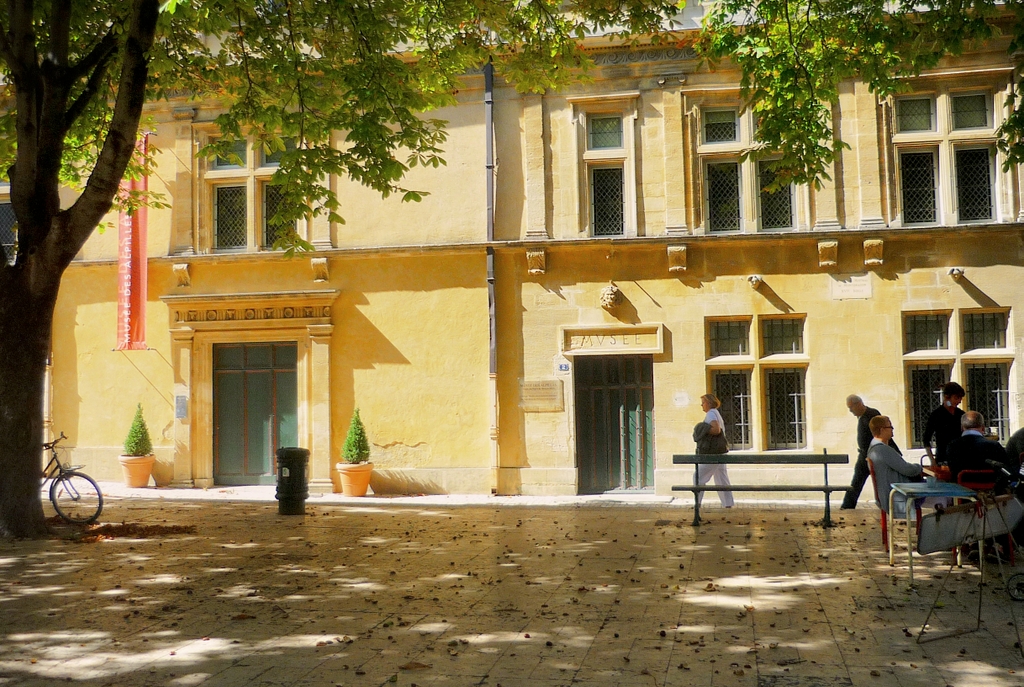
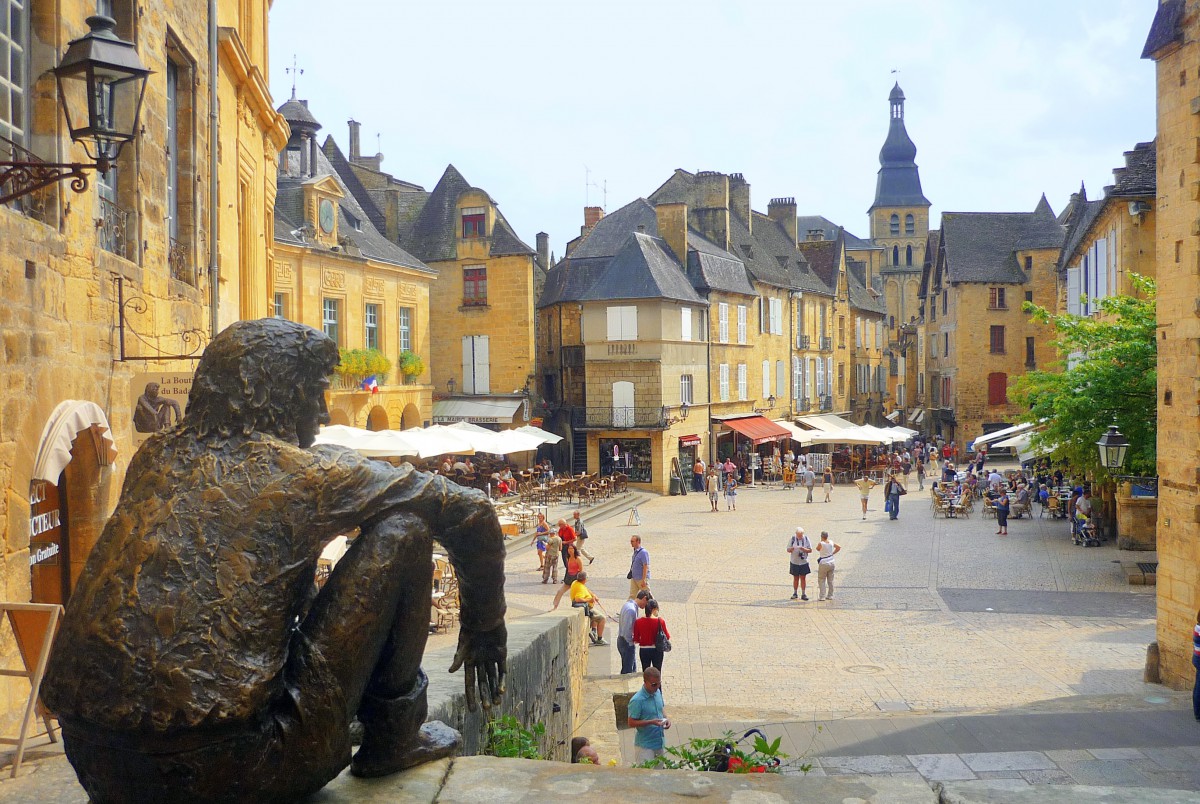
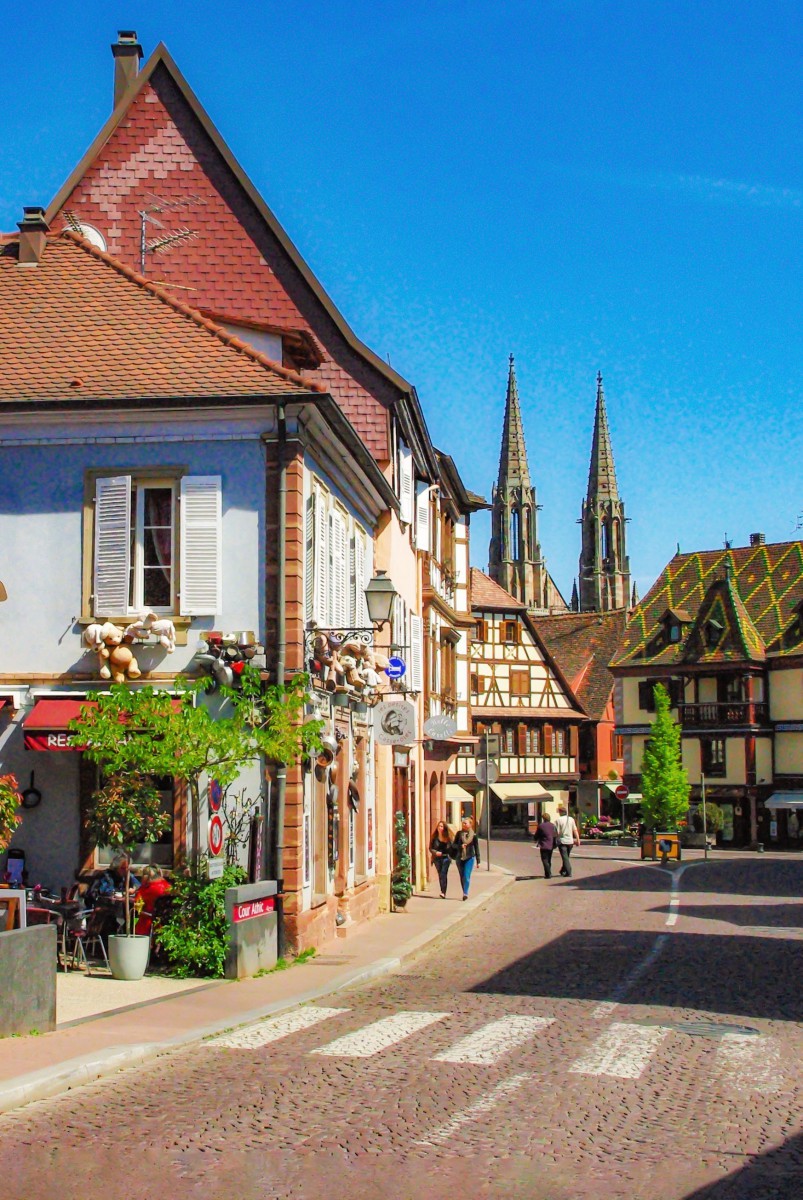
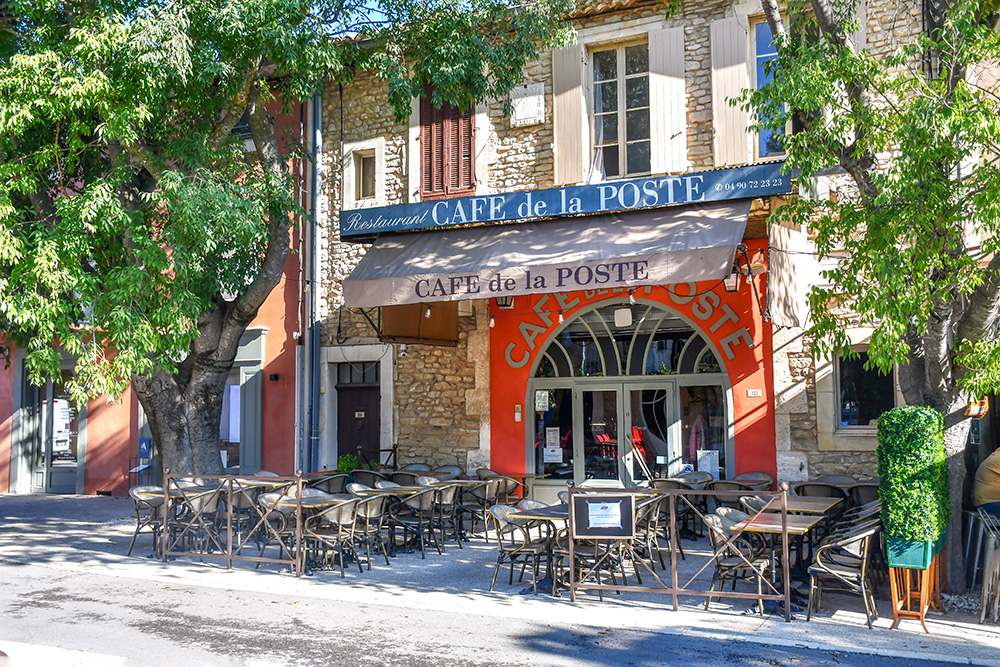
The most beautiful detours of France
In the late 1990s the mayor of Loches founded the association Les Plus Beaux Détours de France. The goal was to include little towns (pop. between 2,000 and 20,000) with a rich heritage that are situated off the busy main roads of France.
Today the association comprises 106 small towns in 71 départements, including Thann (Alsace), Pernes-les-Fontaines (Provence), Toul (Lorraine), Louhans (Bourgogne), Nyons (Drôme provençale), Honfleur (Normandy)…
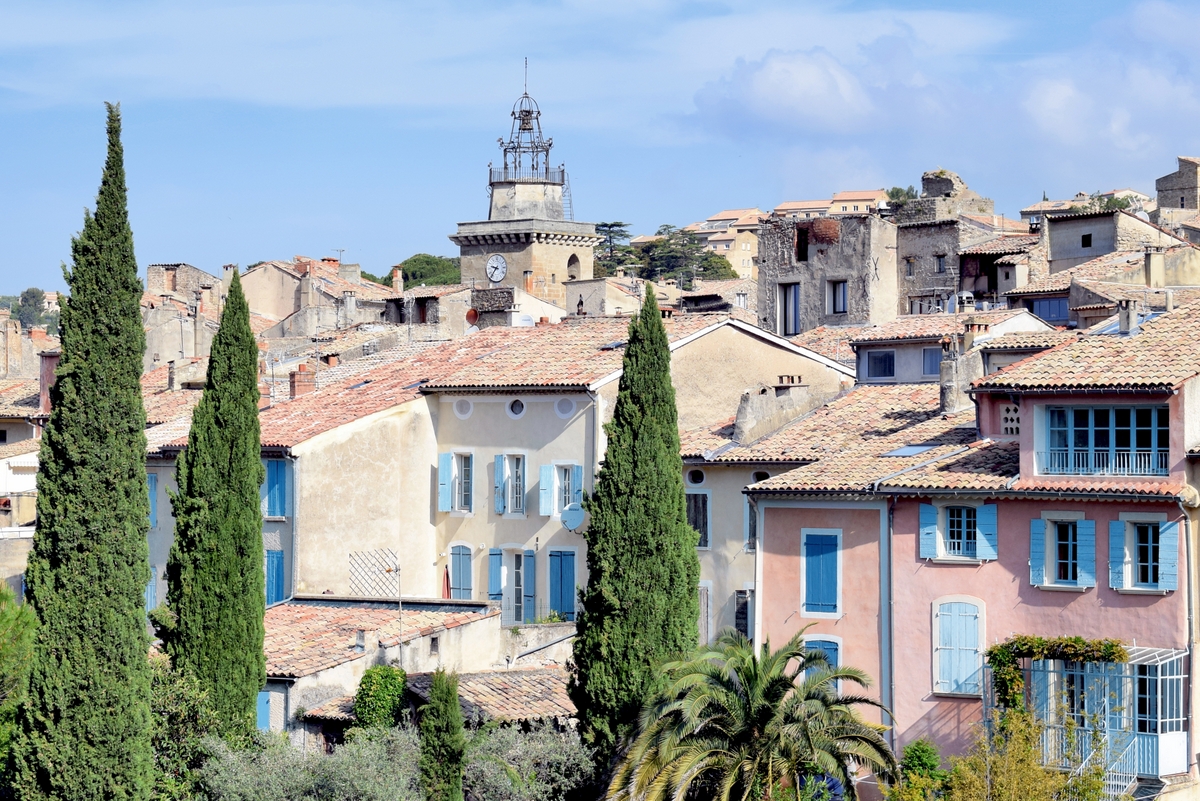
For more info, check out the official website of Les Plus Beaux Détours de France.
Venture out into the French countryside
From these market towns, there are many reasons for venturing out into the local countryside.
It could be for:
- walking on top of a hill to admire the view,
- seeking out specific highlights such as a medieval ruin or an old watermill.
- exploring deep mysterious forests and lush pastures where cows outnumber humans.
- cycling along a canal on the traffic-free towpath for miles.
- taking part in outdoor activities such as canoeing, rock-climbing, paragliding…
- eating at a restaurant in the heart of the countryside that serves regional specialities on menus.

Beautiful French countryside villages
Just guest how many villages there are in France?
More than 30,000!
Of course, not all of them are worth your visit. Some are just a cluster of houses with no (touristic) interest.
But many will reveal a different aspect once seen from afar, in their rural backdrop.
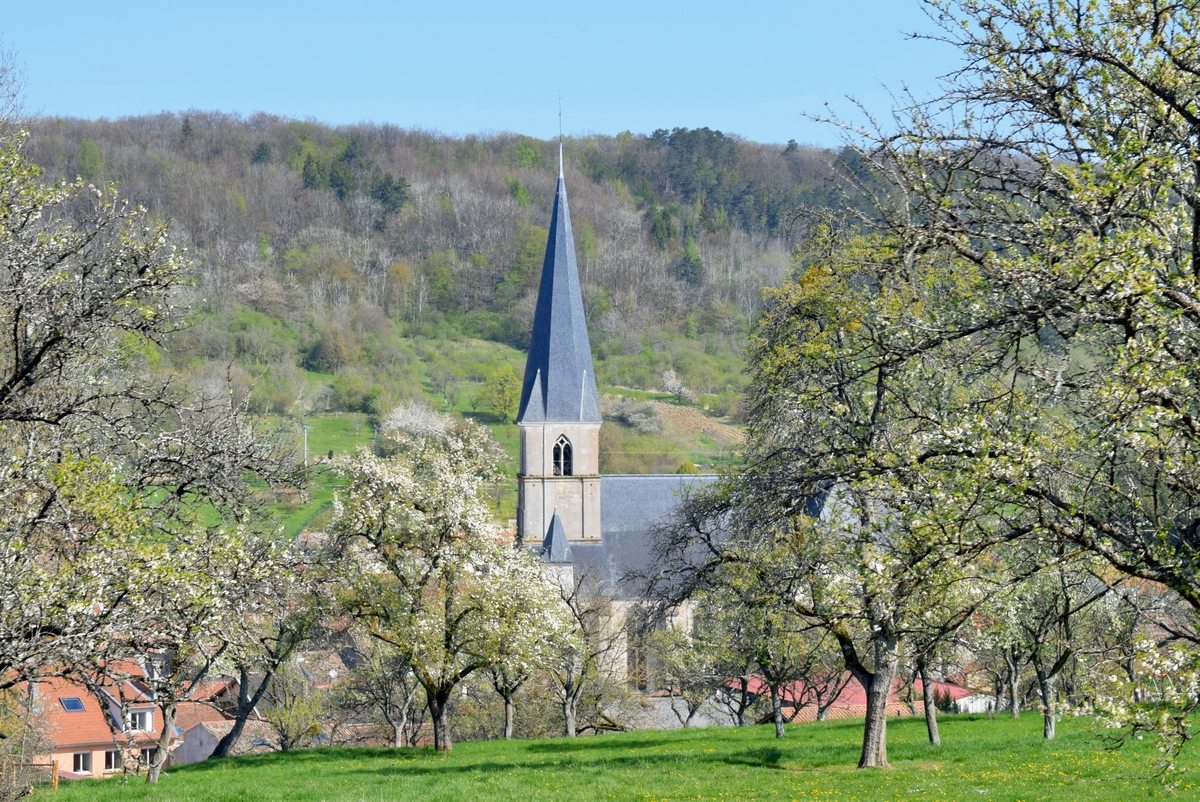
What is a village in France?
Statistically speaking, a village is a commune with a population of less than 2,000.
The traditional understanding is that it is a cluster of houses organised around l’église (the church and la mairie (the town-hall).
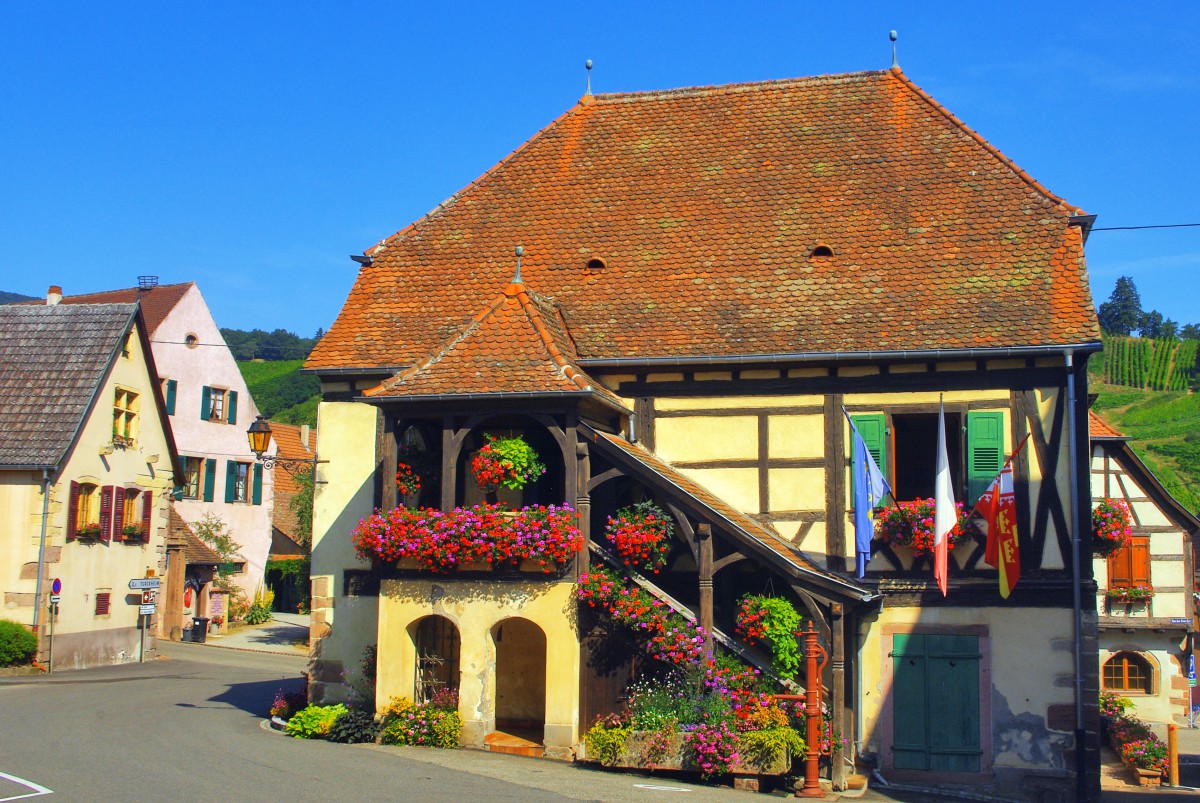
Many villages date back to ancient times and have their own history and individuality.
Some villages have since lost their status.
- Because they grew too large in population.
- Or they got included in a town or city.
This is the case of Montmartre in Paris. A village occupied the top of the hill until 1860 when it was included within the limits of Paris. However, we still talk about the ‘village atmosphere‘ of Montmartre despite the fact that it is part of one of Europe’s largest cities!

The most beautiful villages of France
Out of the 30,000 villages in France, only a small number are of tourist interest.
An association created in 1982 listed almost 160 villages in the label: Les Plus Beaux Villages de France.
It includes some popular destinations such as Gordes (Provence), La Roque-Gageac (Périgord), Riquewihr (Alsace), Yvoire (Haute-Savoie)…
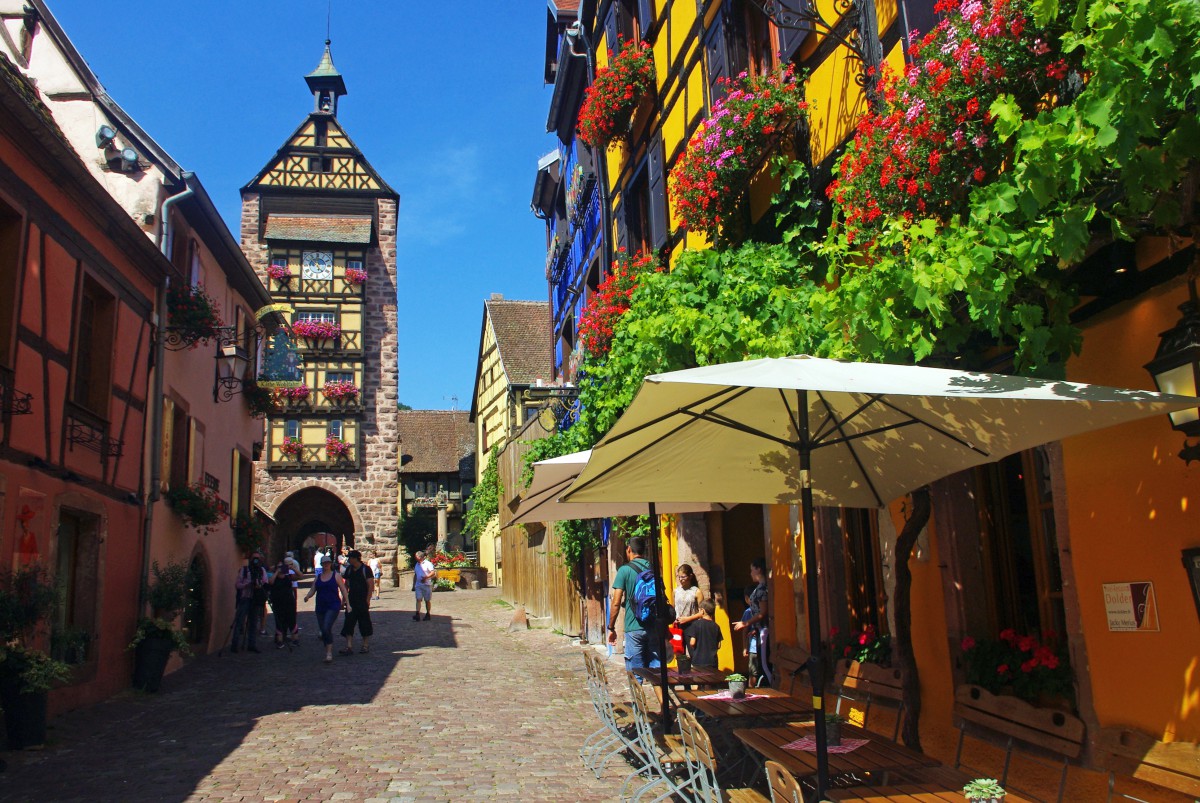
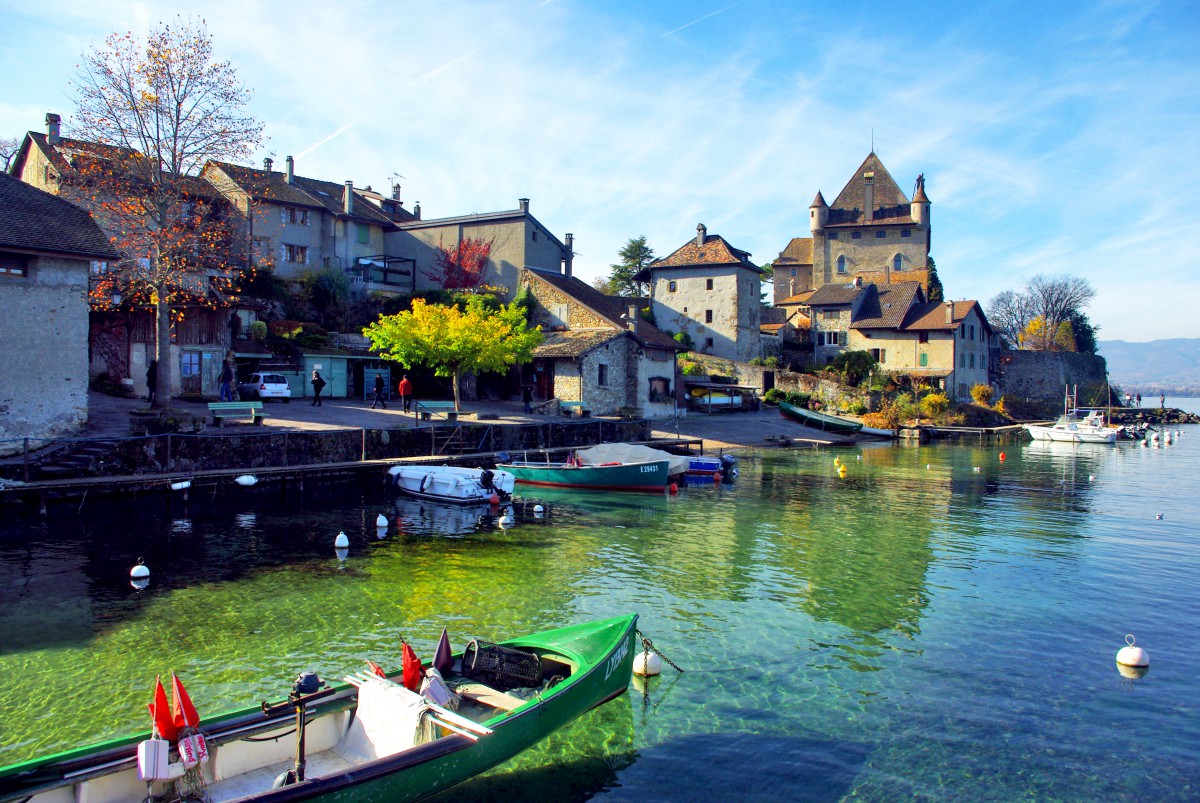


Other villages which are not part of the association are equally beautiful: Hattonchâtel (Lorraine), Montfort-L’Amaury (Ile de France), Eygalières (Provence)…
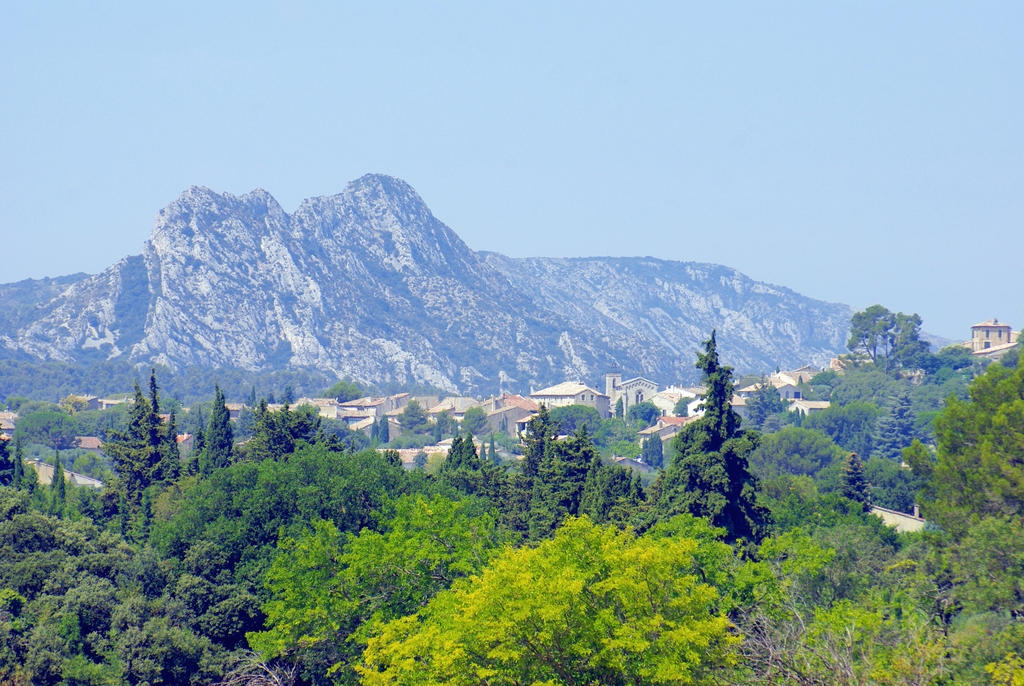
And then there are a large number of pretty and unpretentious villages that you’ll discover while driving across France. As for us, we stumbled upon:
- Flassan (Provence),
- Saint-Romain (Burgundy),
- Orsans (Franche-Comté),
- Hirtzbach (Alsace)…

These survivors of urban development and the drift from the land offer a timeless glimpse of France’s rural history.
The local markets
Rural France goes hand in hand with the amazing open-air markets.
If you’ve been to France before, it was probably one of your holiday highlights. Personally, we’ve been fascinated by the markets of Provence, Burgundy, and Périgord. The display of local produce is indeed a treat—just look at the photos!
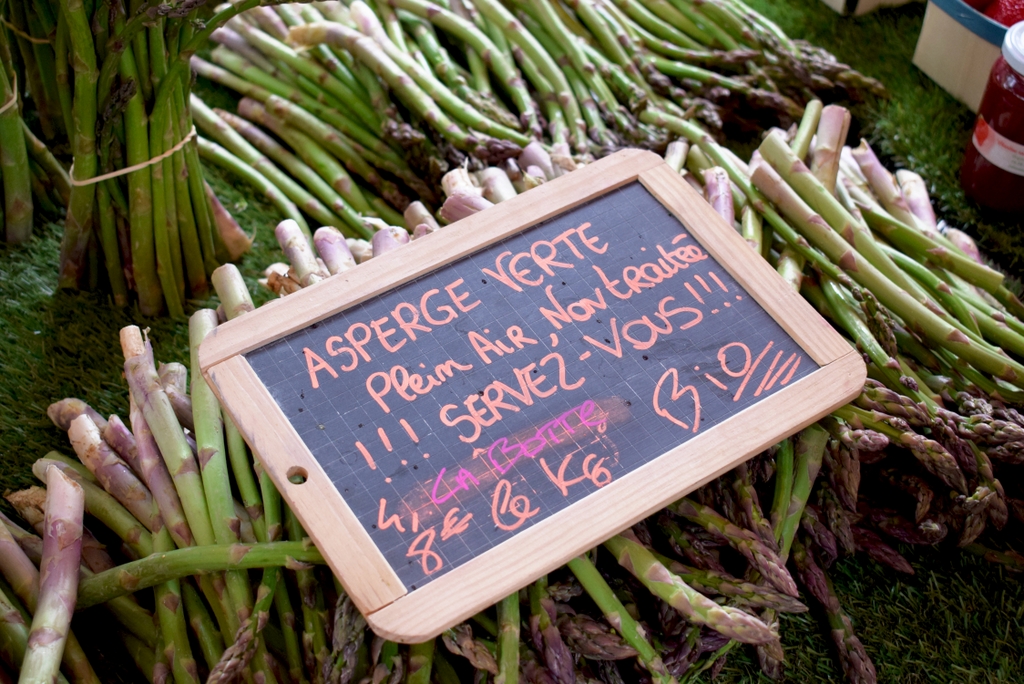
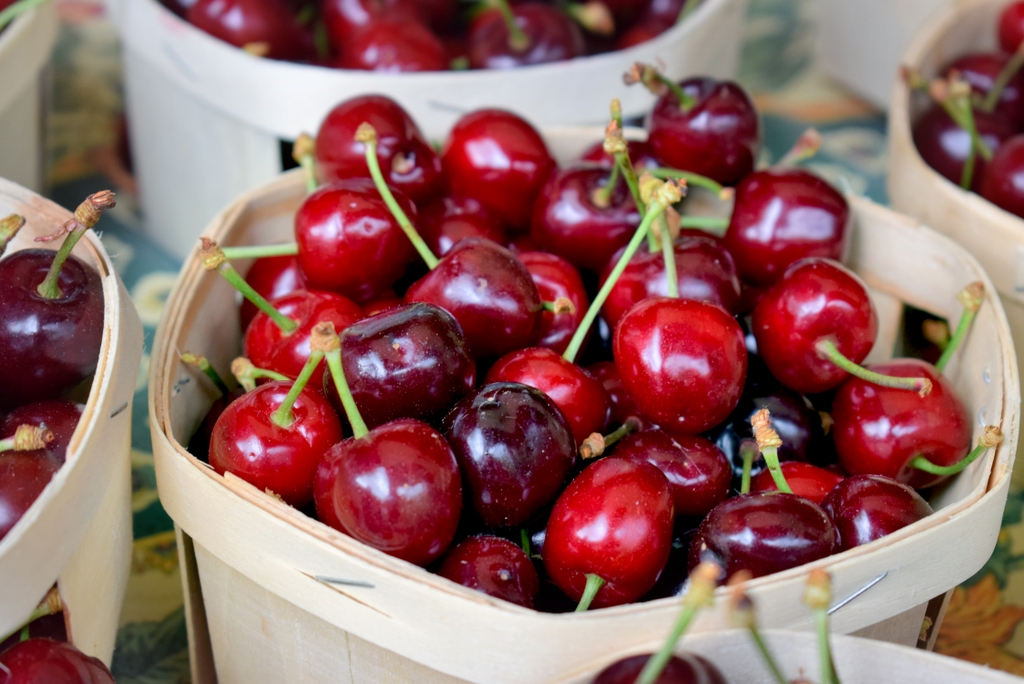
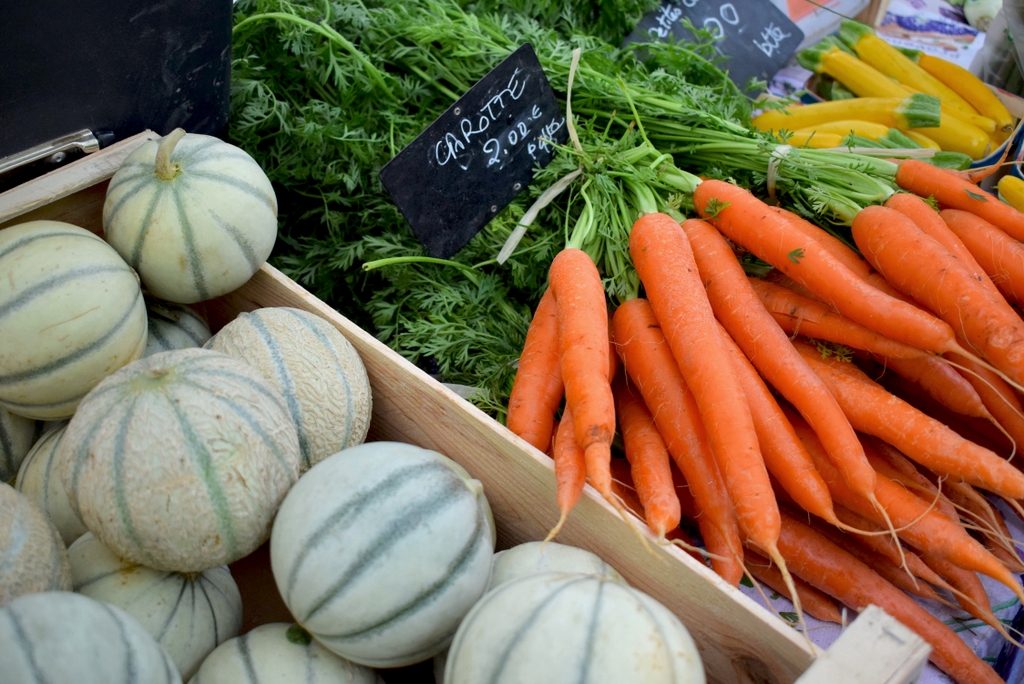
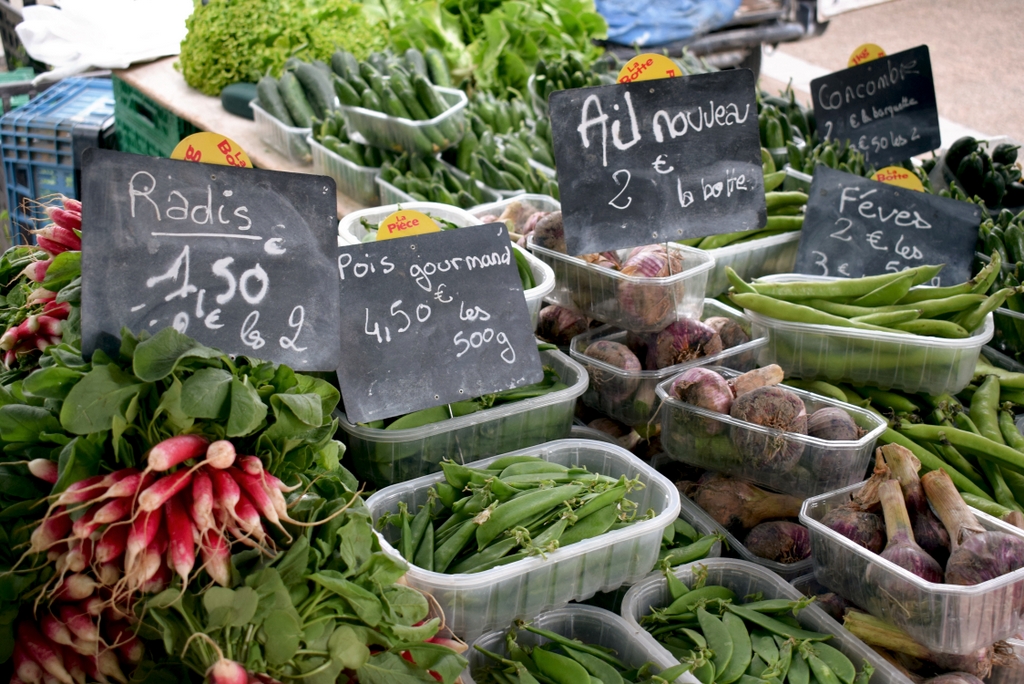
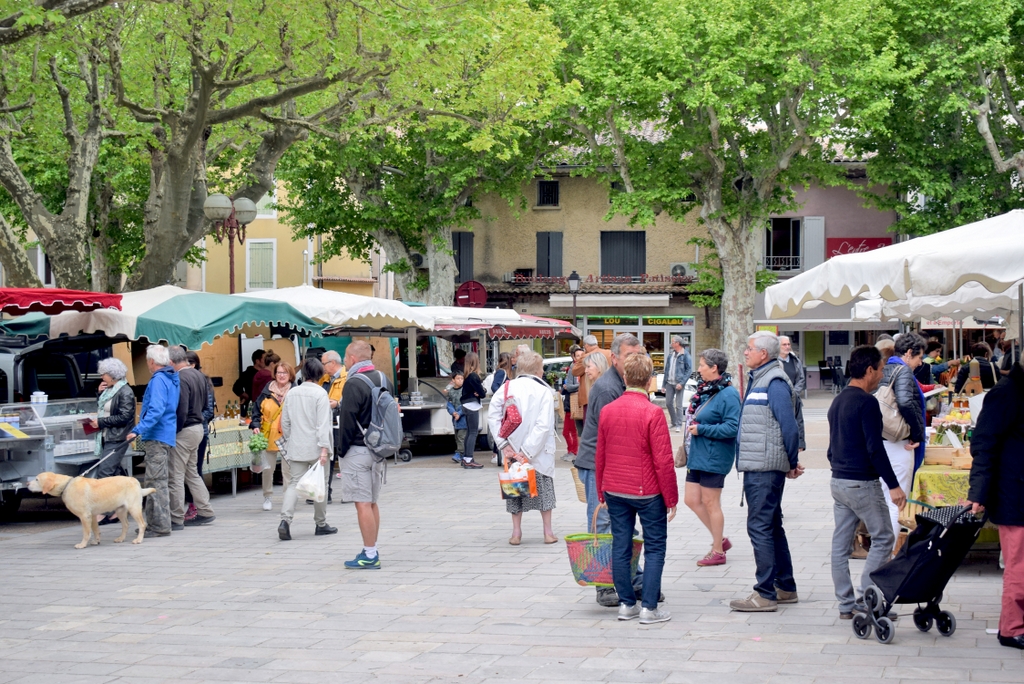
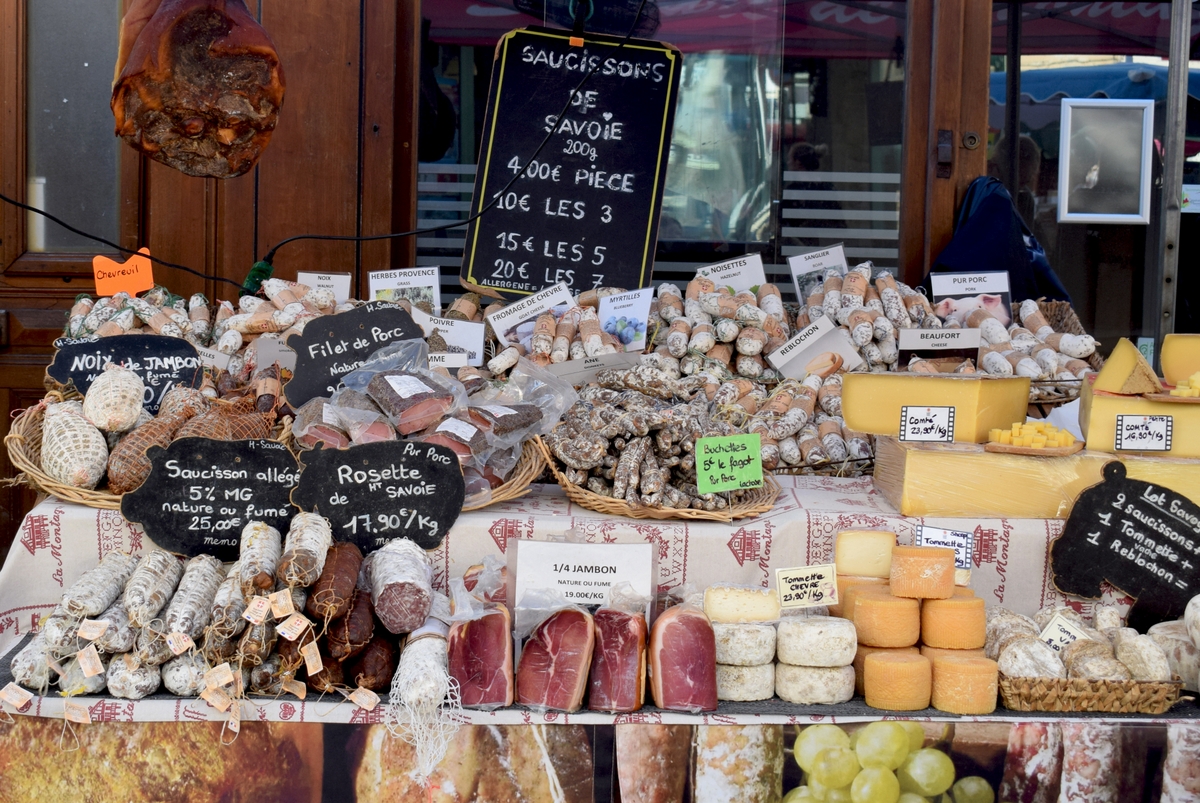


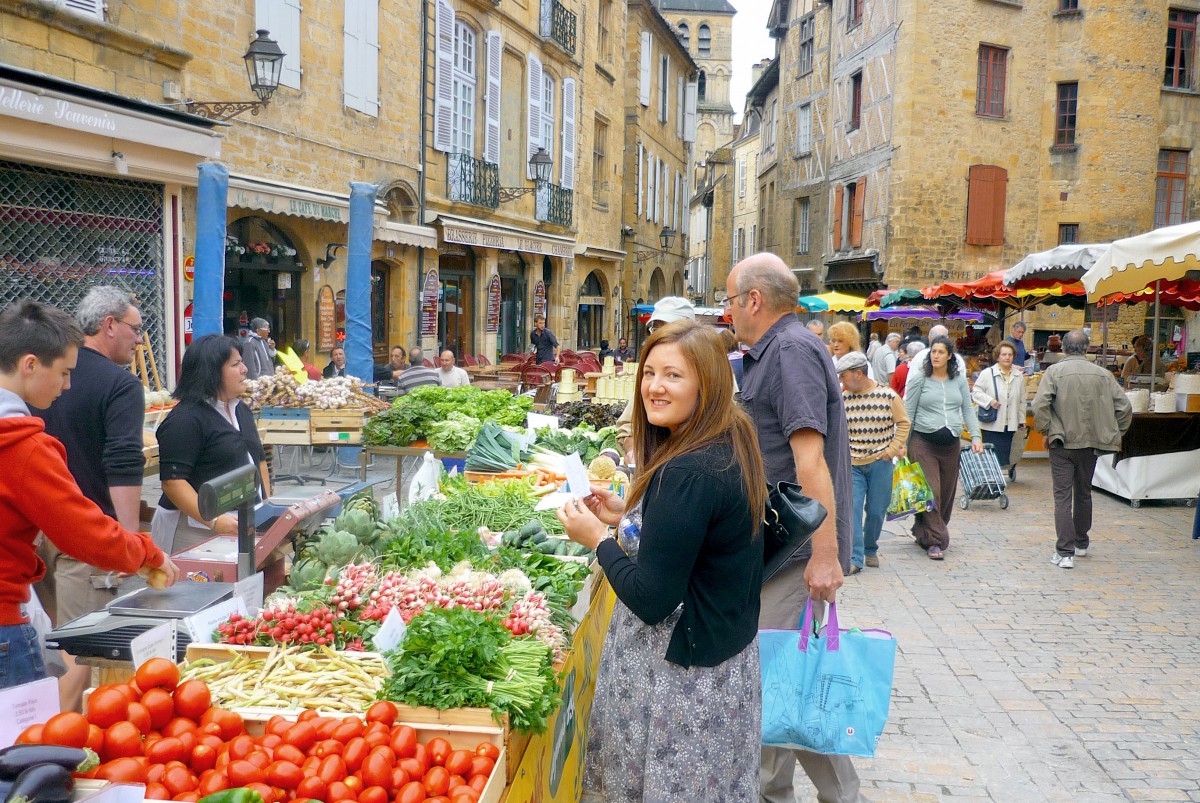

The French Countryside-style dinner table
If you follow France-related photos on Instagram or other social media, you’ve probably come across some amazing photos of a beautiful staged table set in the countryside.
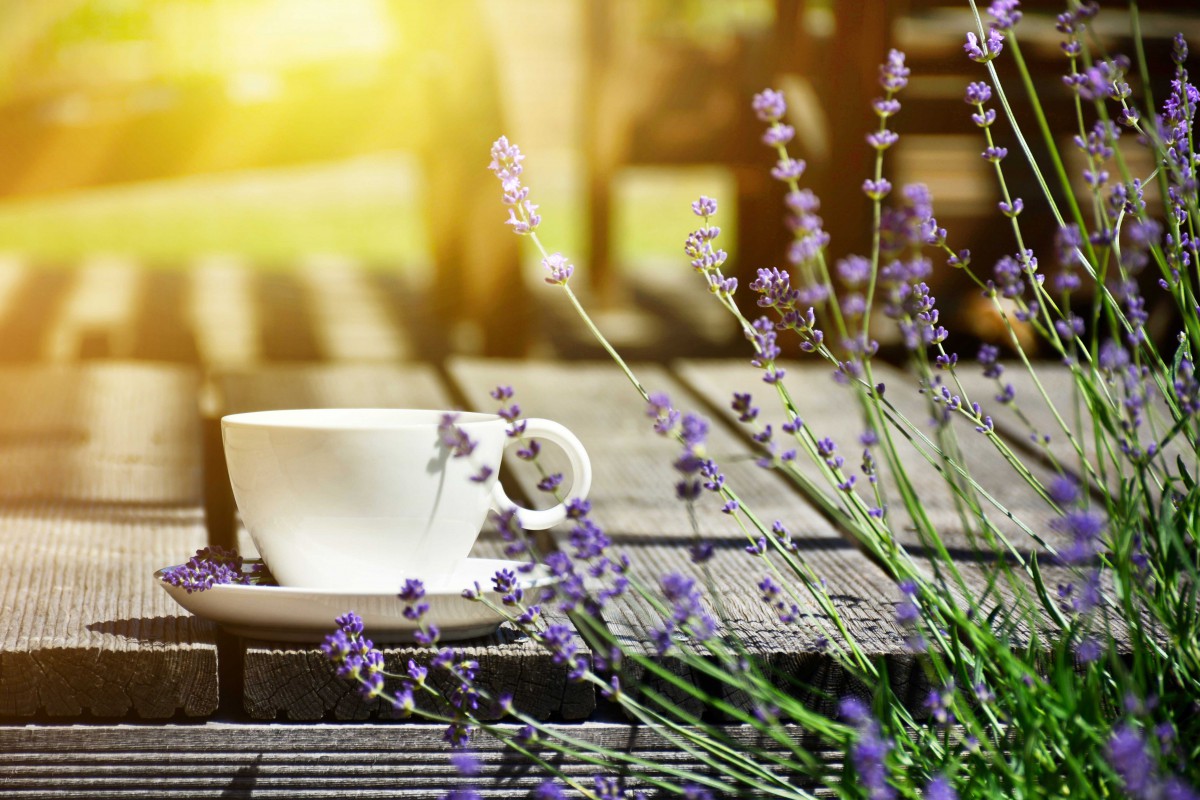
I’m not sure that each French family living in the countryside follow that particular style… but I guess it is part of a particular image we have about France.
A romantic and atmospheric vision of what French life ought to be…
Even though the reality might be a little different.
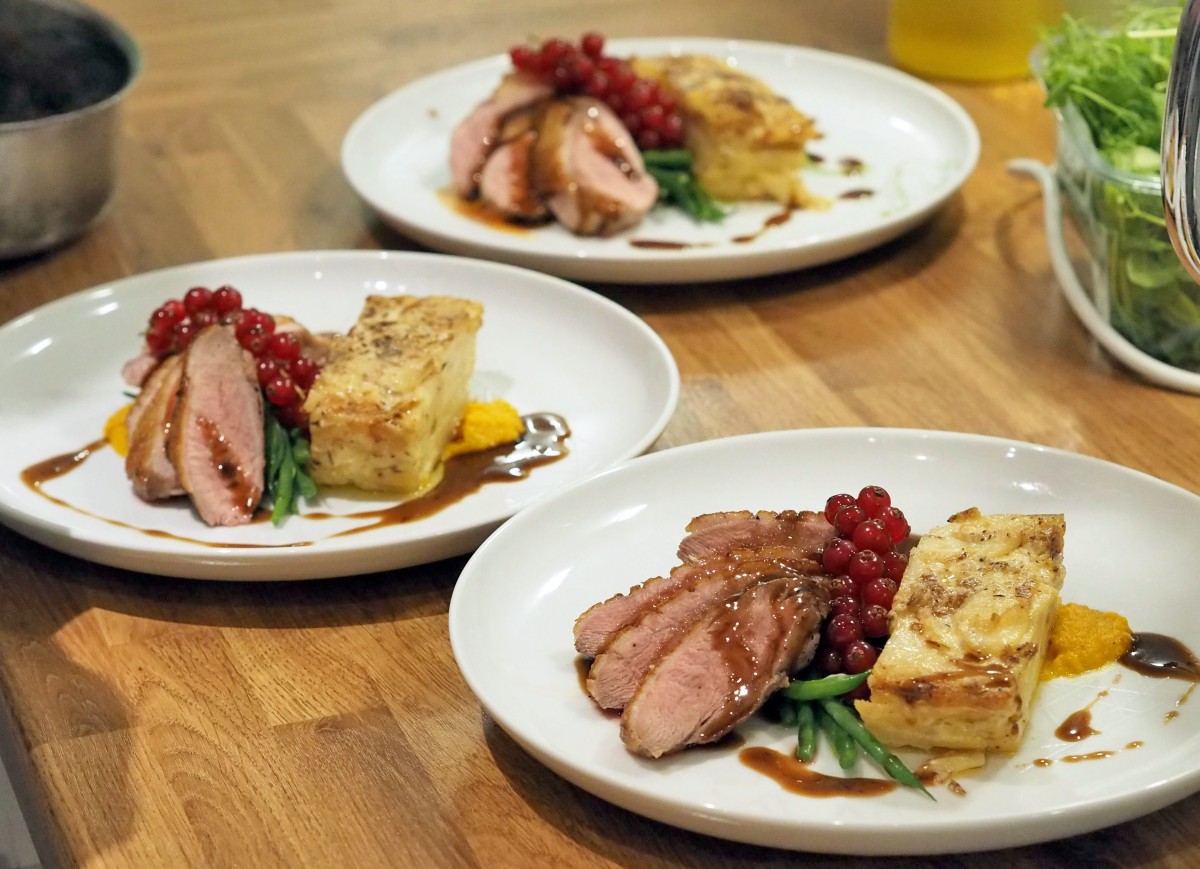
But again, we’re allowed to dream!
Anyway, when searching the Internet for information about the countryside of France, I came up with a beautiful French-inspired dinnerware set you might be interested in.
Particularly if you want to dress the table with a French countryside touch. Look no further than Mikasa.
Mikasa is an American brand name, a leader in tabletop fashion in dinnerware. The name of one of their collections intrigued me. Guess what the name was?
The Mikasa French Countryside Collection®
And I have to say it does look “French countryside-ish” to me with the gently scalloped edges and curves and rich cream colour.
Check out the whole collection range here.
The brand also offers a matching set of stainless steel cutlery with serving utensils:
The best way to explore the French countryside
In fact, if you want to explore the French countryside from the comfort of your sofa, there’s a great way to do so.
Follow the Tour de France bicycle race on TV!
During an epic race, the cyclists cross the whole of France from towns to villages and from countryside hills to mountains passes.
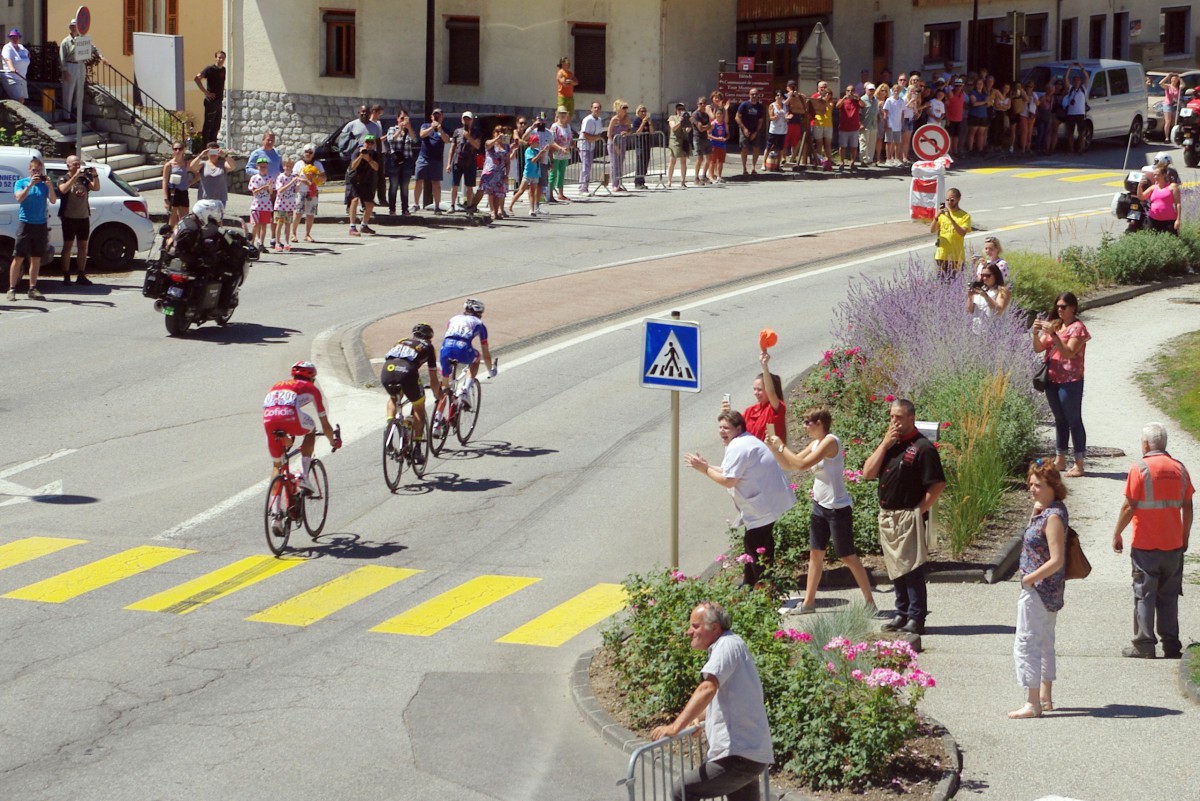
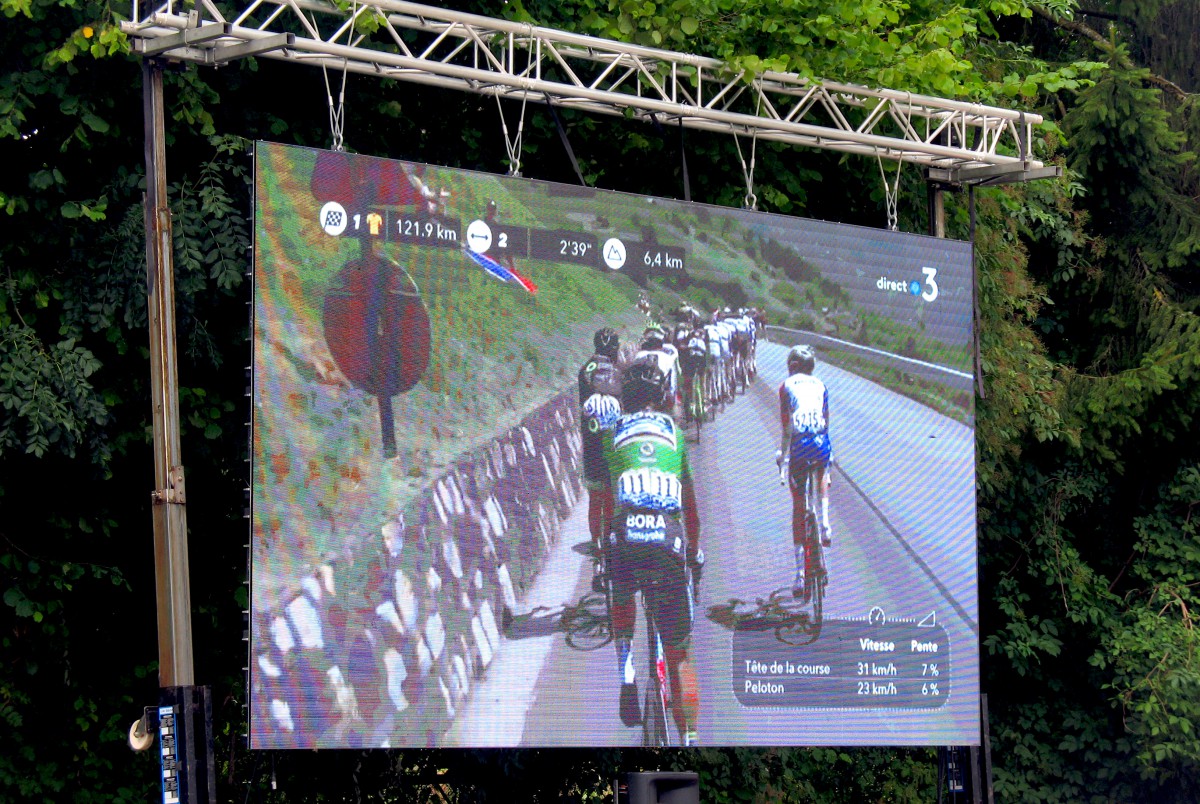
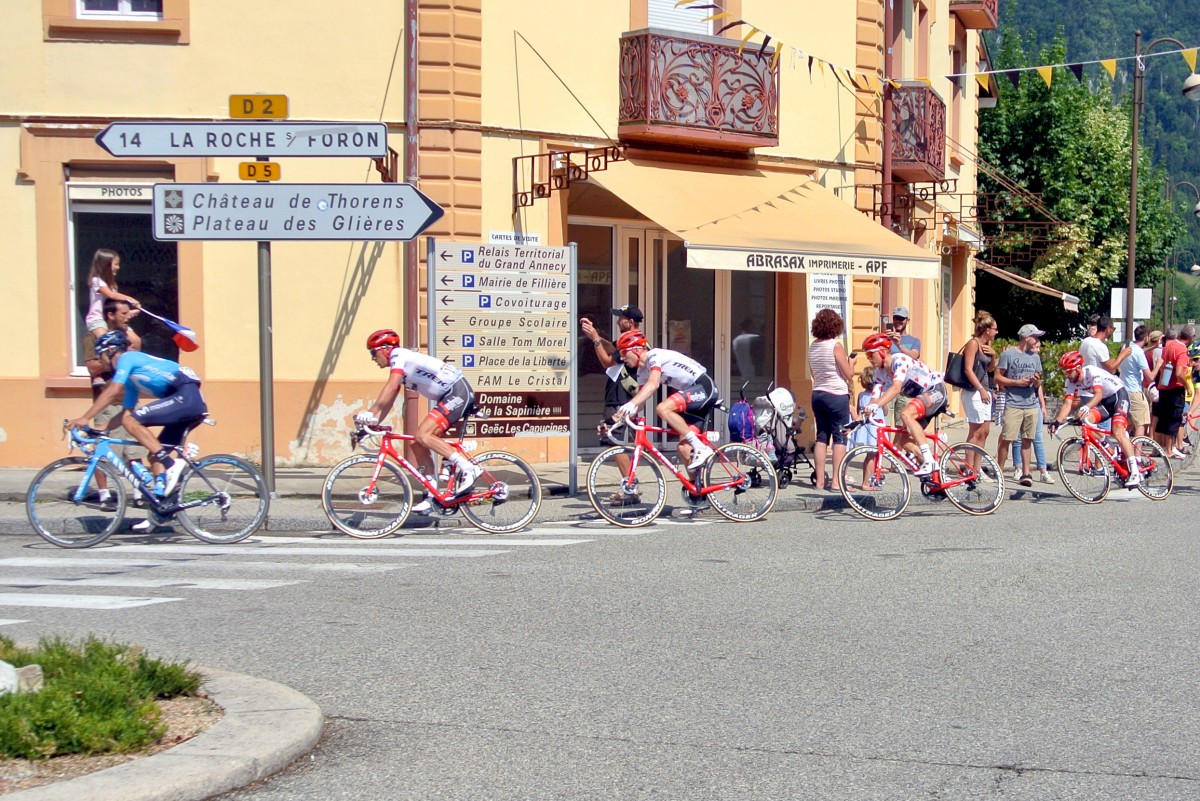
In conclusion
Finally, let’s end with a brief summary:
The countryside in France is NOT:
- an urban area, even outside Paris (such as Annecy)
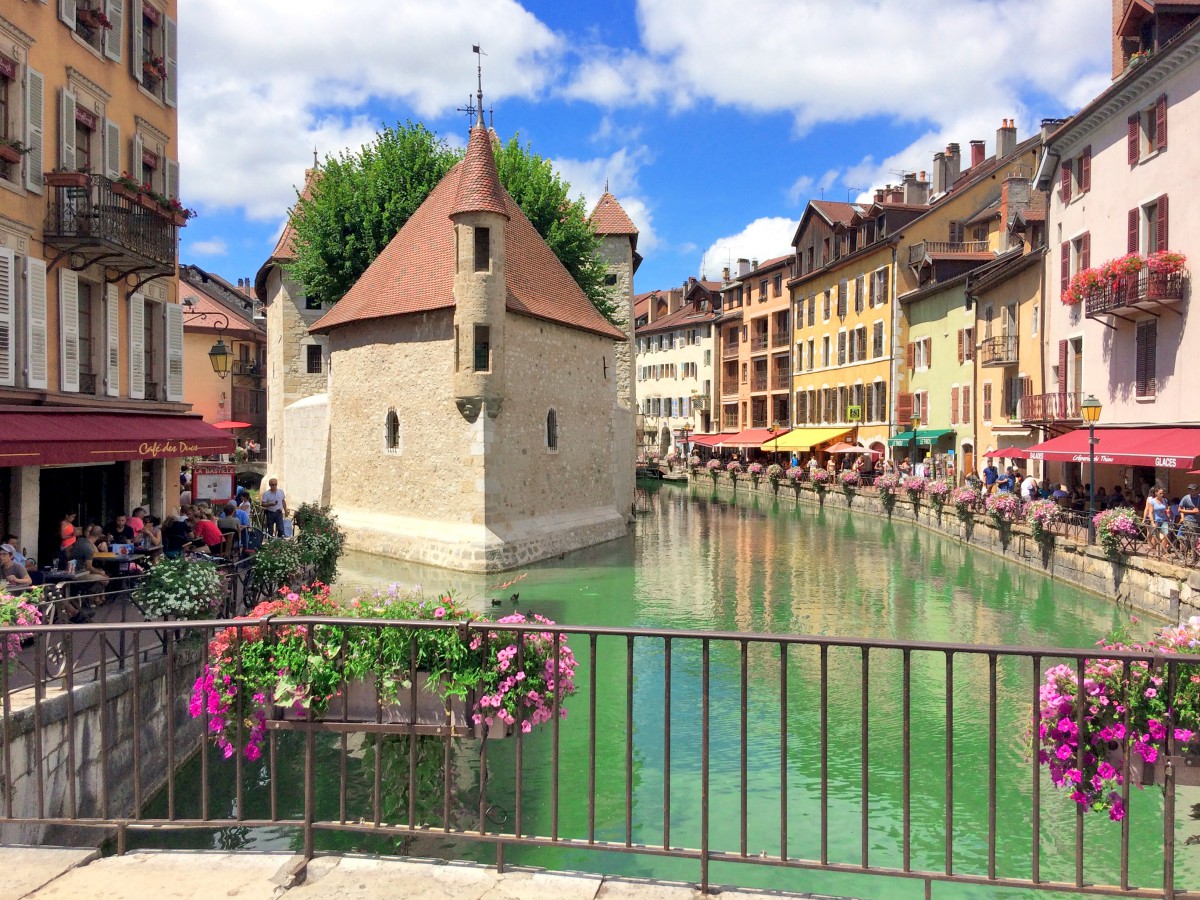
- a seaside village (such as Eze)
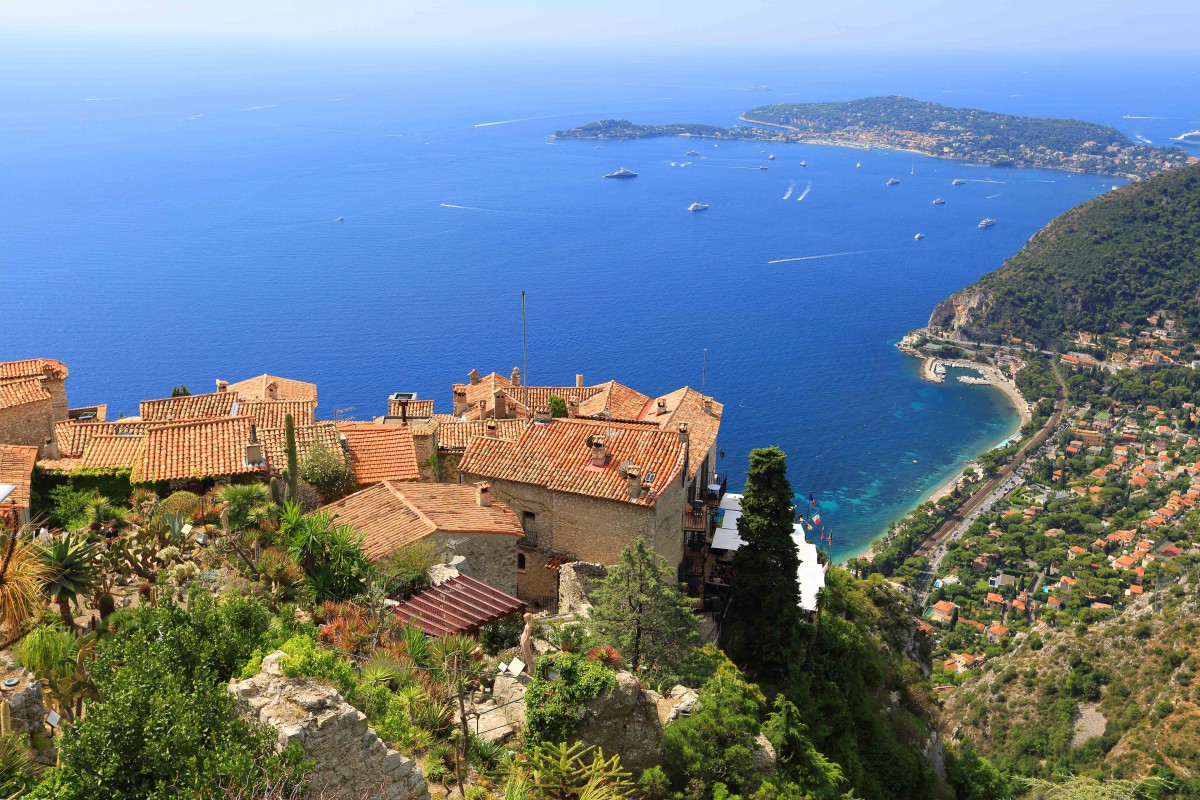
- a mountain resort (such as Chamonix)
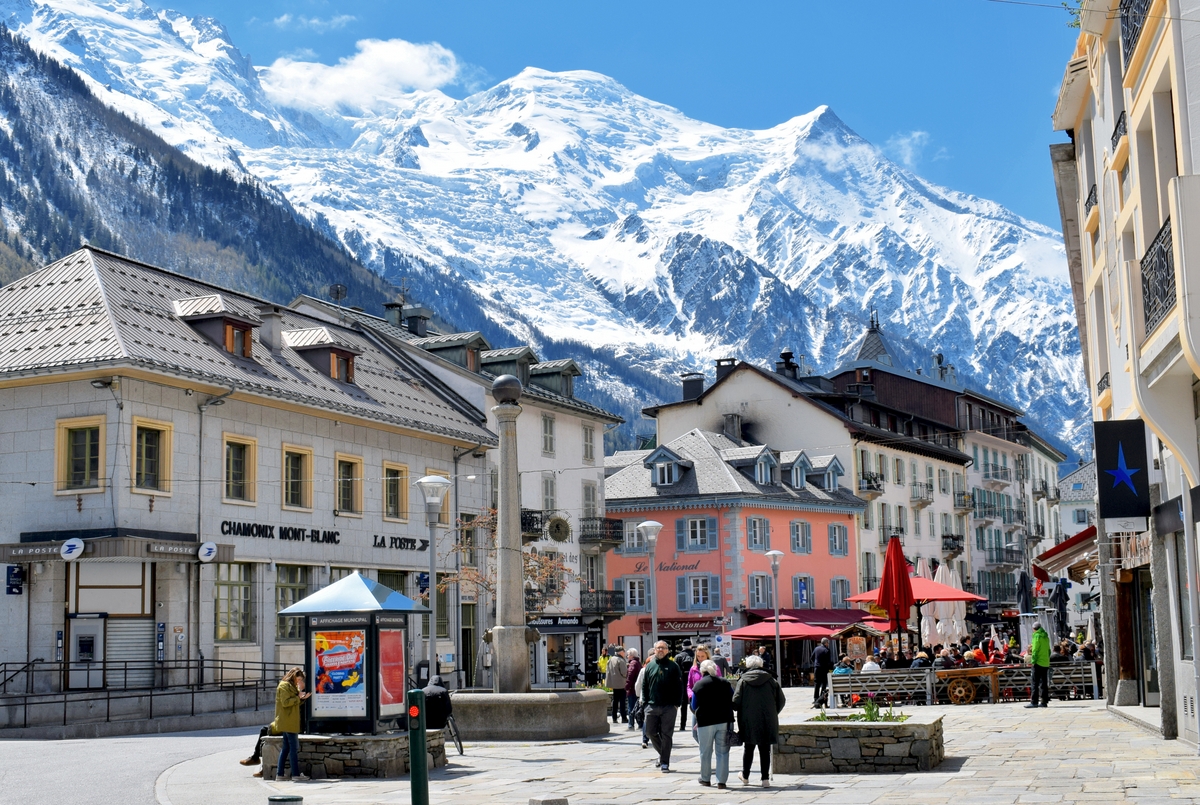
The countryside in France IS:
- a patchwork of rural landscapes made up of forests, meadows, orchards, vineyards and fields that extend beyond the horizon.
- a hilly or flat landscape, dotted with a myriad of picturesque villages.
- a land where the unevenly spread population still has a marked rural character.

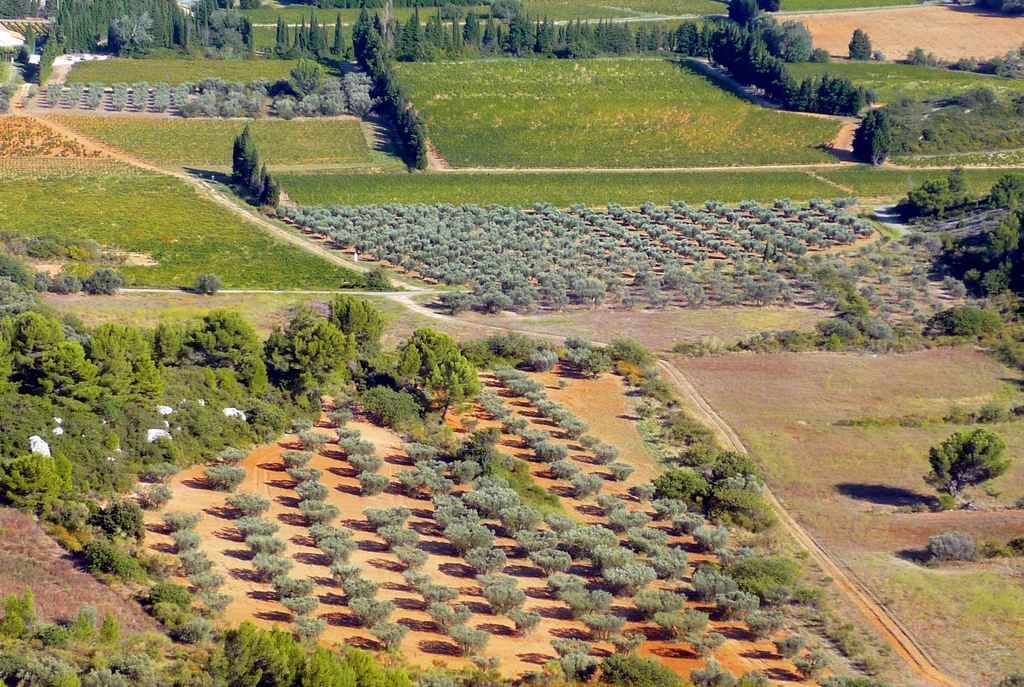
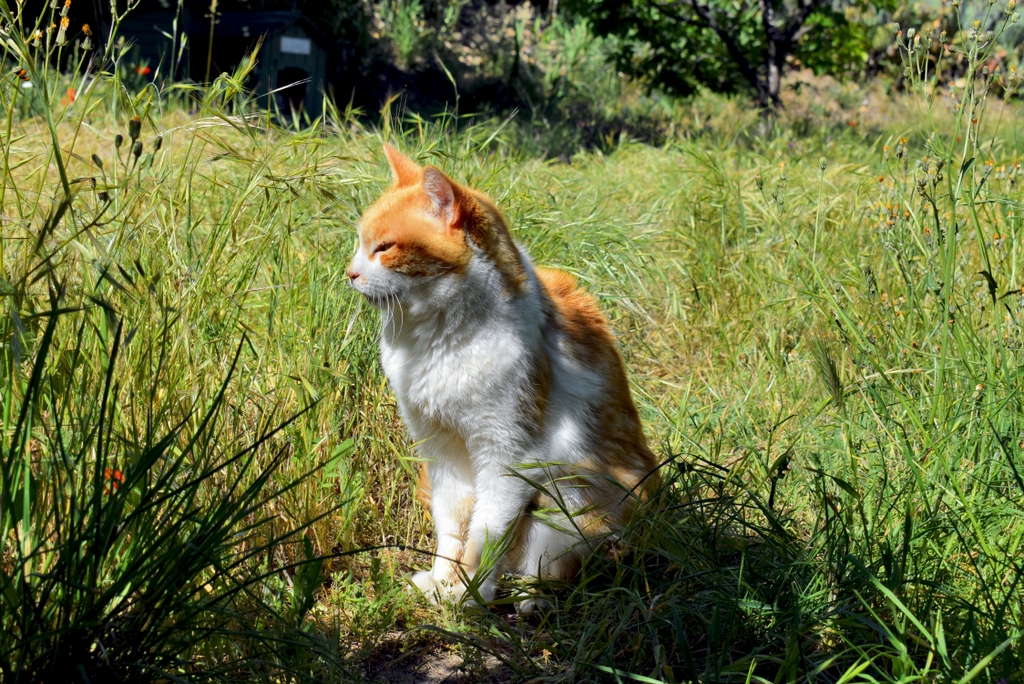
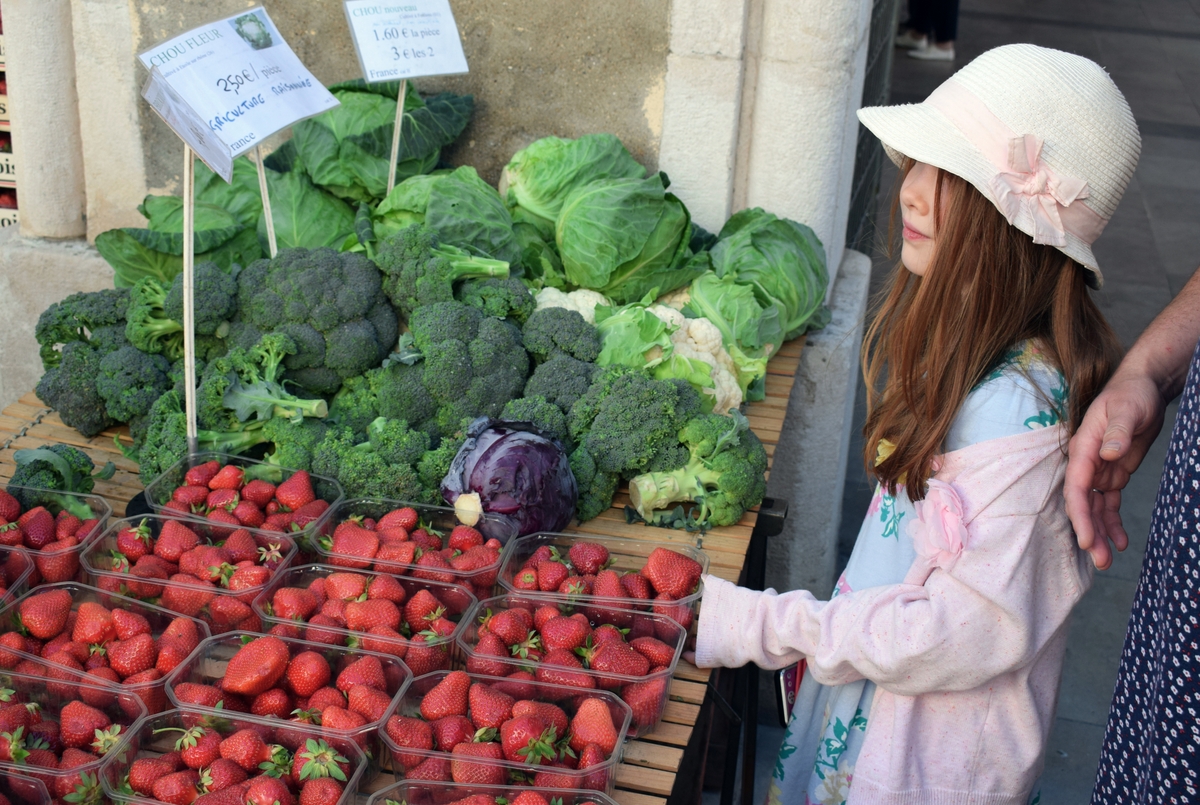



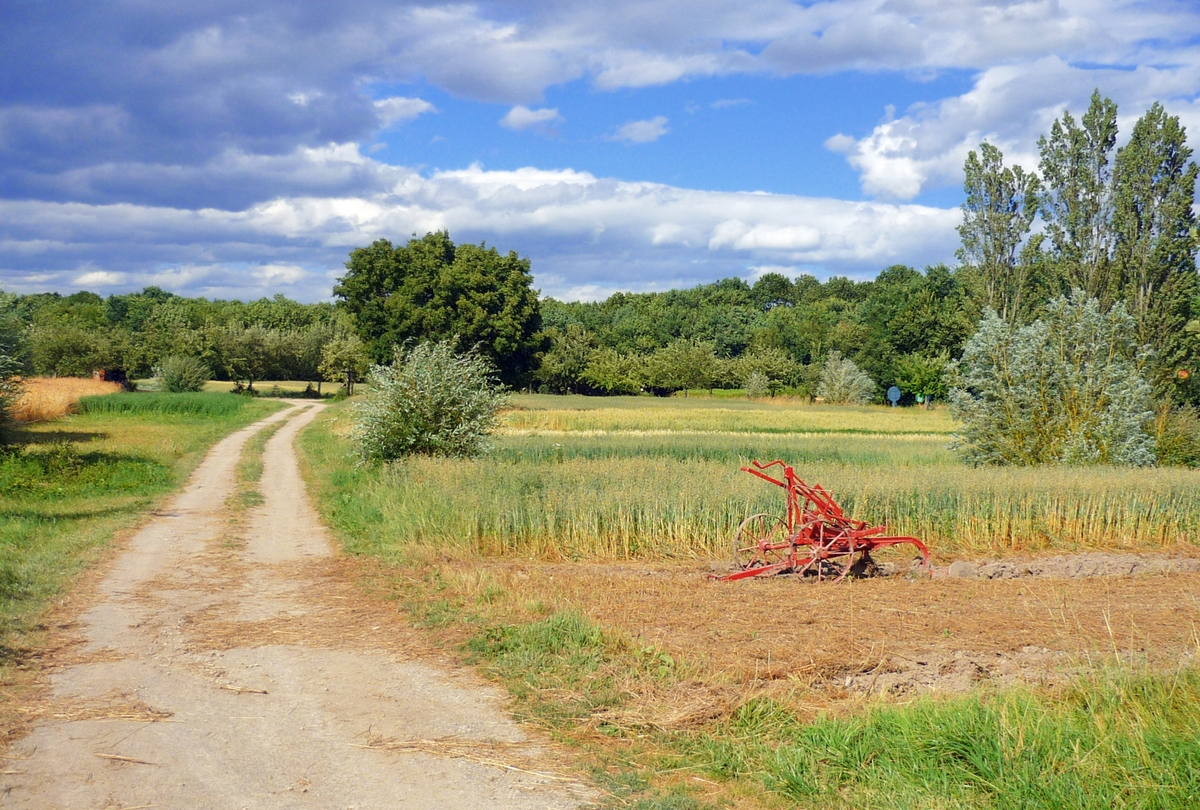
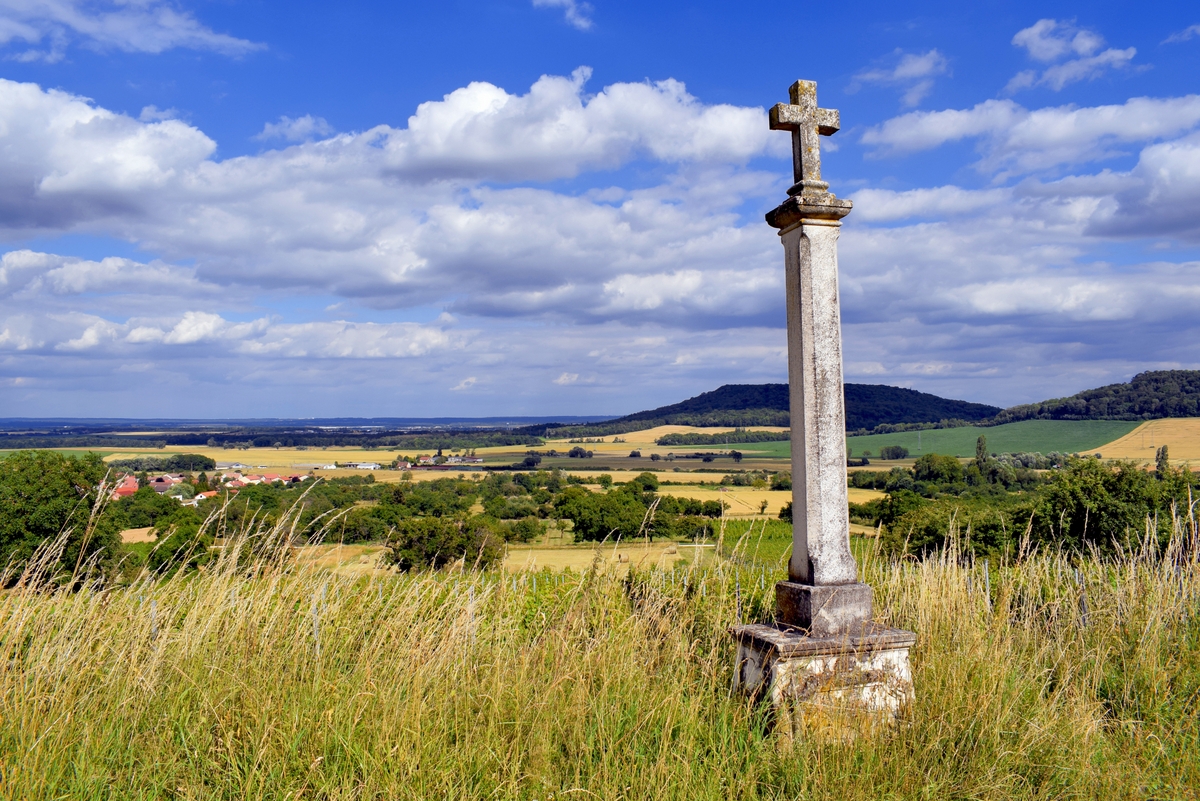
If the countryside of France inspires you
Do you remember the first time you visited rural France? Leave a comment below with the place where you’ve been. I’d love to hear from you!
And why not save this Pin for later?
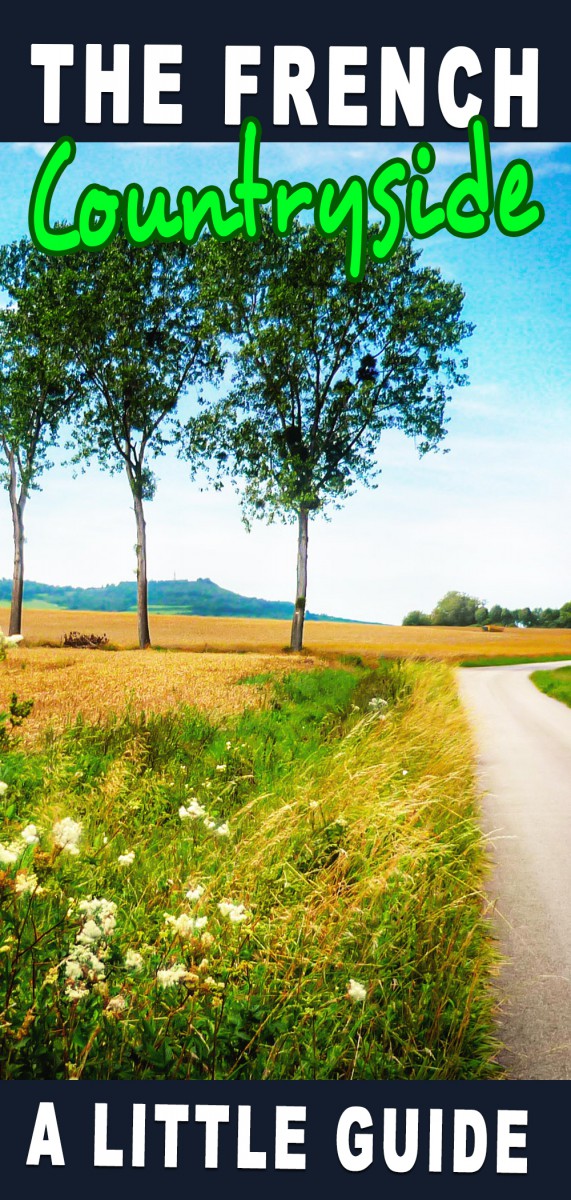





Hello Pierre, Belatedly, my delight in the virtual visit of Nancy. I had no idea about what I have missed. I hope that by next year I can have the pleasure of seeing Nancy with my own eyes!
The countryside is known for its superb agriculture and is a good explanation of why French eat well but do not generally get obese. I reside in Bkk and eating is a big pastime here too but my tastebuds are keener on French cuisine than any other cuisine. Visiting the countryside via your introduction is a great pleasure especially during the Pandemic which has spoiled us from visiting France. Greetings and best wishes, Ernest
Thank you Ernest! I’m glad to hear you enjoy the virtual trips to Nancy and the French countryside! Let’s keep dreaming of better days when we’ll be able to travel again! 🙂
Thank you for the continuing delightful reading each week and memories our trip to Normandie (y)
based in Hon fleur. A good bit of what we saw was rural and this now currently touring France via the Tour de France. Some this year is quite rural but a at home travel through your beautiful country.
Stuck in SW Florida this year.
Hello Kay! Thank you for your comment. Yes you’re so right: following the Tour de France is a great way to discover the French countryside. I’ve just added this idea to the article. Thanks!!
Hi,
What is the best way to move around countryside France .. Between towns and in a town
Roji Jacob
Hi Roji, as public transportation is quite limited in the French countryside, it is better to rely on a car … or a bike! 🙂
Hello Pierre –
My father was in the US Air Force during the Cold War. I grew up in a small town called Cheminot which was then located in the Alsace-Lorraine province. My village was Google mapped in 2010 which allowed me to “walk” down the village streets past our stone house and the church that was under construction before we moved away. I cried but felt comforted when I remembered that, next year, I will build my home on the south side of a mountain with a couple wild, untouched alpine rural acres to beautify. Thank you for these beautiful photos!!
Thank you
You’re welcome, Joyce! Google street view is indeed a powerful tool that can bring back so many fond memories! I’ve used it a lot to remember the places I’ve been/lived 🙂
Is Crecy French countryside? Do you have any thoughts on the village?
Yes it is. I haven’t focused on that village so the best is to go to the Wikipedia page to get an idea. You can also check out the village on Google Map (streetview).
We have often rented a car and driven through the countryside. The small towns are beautiful – some so small that there are no petrol stations or cheese shops. The search for my ancestry brought me to the tiny village of Chaumeil and the surrounding countryside. Although Paris will always be my favorite place in France, the countryside is also a must see.
Thank you Kathy!